Archiv der Kategorie: Robots-Blog Content
ABot Advanced by Avishkaar
The Avishkaar ABot Advanced Kit is a comprehensive DIY kit for STEM robotics and coding designed specifically for children aged 8 and up. It contains over 60 parts, including metal parts, motors, sensors, wheels, USB cables, screws, nuts, an Allen wrench, and a wrench. With these parts, children can build 10 different robots, from simple vehicles to more complex constructions The set reminded me of the mBot when I set it up, as it was also based on a sturdy metal construction. The included stickers and the tool are nice. The instructions were easy to understand and I didn’t find any errors or had any problems assembling. The app for remote control and programming must be activated with the product code and the user must be registered before using it for the first time. When deploying, e.g. in the classroom, you should have done this in advance. By the way, the 9V block battery visible in the video is not included when purchased from a dealer, but a full-fledged battery pack. I only use the 9V battery because of delivery problems. Overall, however, it is interesting that the robot makes this possible at all. I’m playing with the idea of connecting a solar cell here and operating the robot with solar energy…like a real Mars rover…
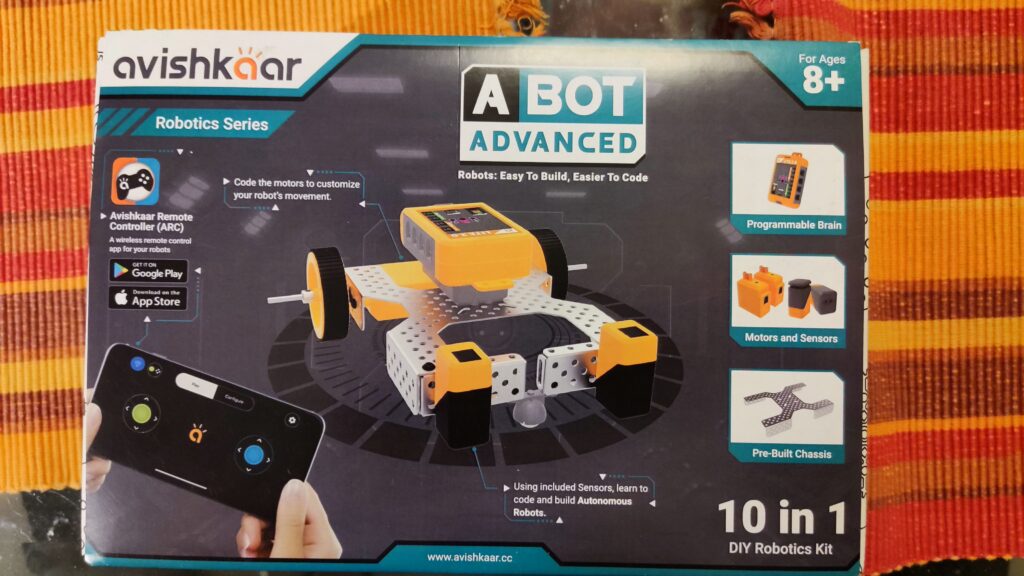
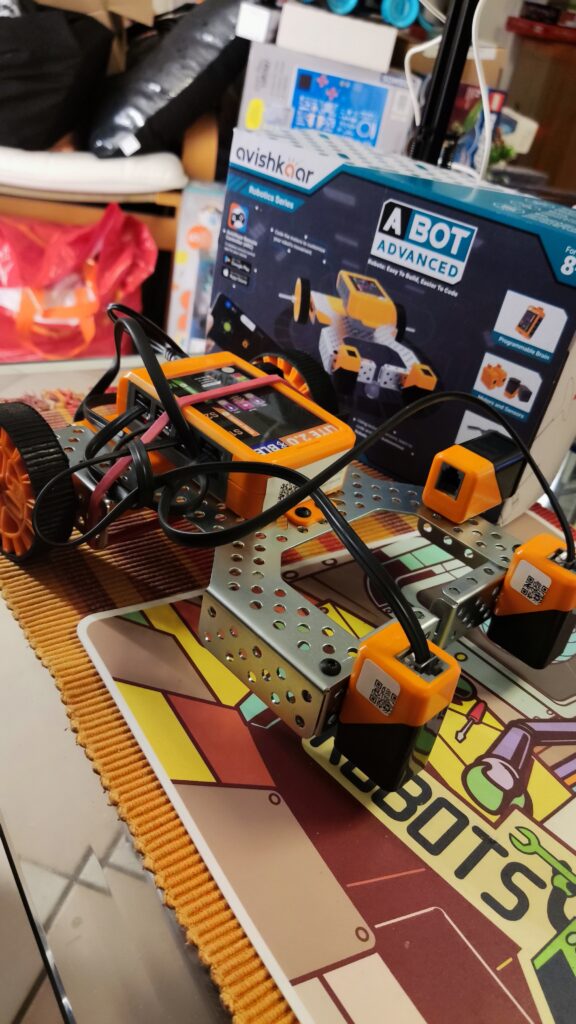
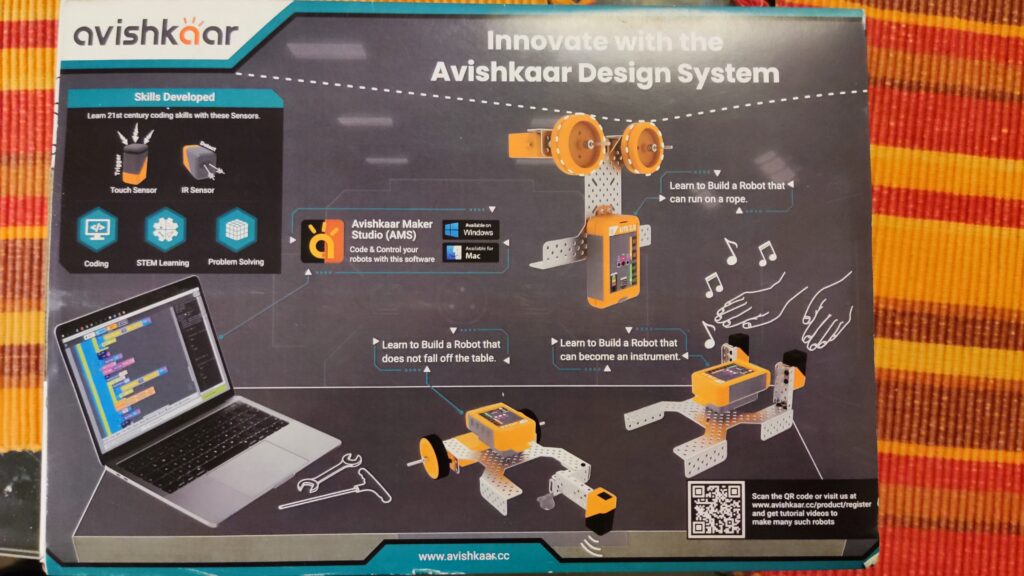
Here is more detailed information:
- Easy to build programmable robots: With this kit, kids can create 10 different robots with over 60 pieces. This includes metal parts, an easily programmable brain, motors, sensors (2x light sensor, 1x touch sensor/button), wheels, USB cables, screws, nuts, an Allen key, a wrench, cables, and instructions.
- Control via mobile app: The robots can be controlled via a remote control app. They can also be programmed using a visual block-based programming environment (similar to Scratch/Blockly).
- Learning Objectives: With the ABot Advanced Kit, children learn robotics, programming, construction, mechanical design and problem solving.
- Compatibility: The mobile app is compatible with iOS 11 or later and Android 10 or later.
- Inexpensive Kit: The ABot Advanced Kit offers a sturdy metal frame to which motors and sensors can be attached. For the equivalent of about 60€, the set offers good value for money. Maybe the set will soon be available at a German retailer.
You can find a comprehensive assembly video of one of the 10 robot models here:
The set is available here: https://shop.avishkaar.cc/products/abot-advanced
ABot Advanced by Avishkaar
Das Avishkaar ABot Advanced Kit ist ein umfassendes DIY-Set für STEM-Robotik und Codierung, das speziell für Kinder ab 8 Jahren entwickelt wurde. Es enthält über 60 Teile, darunter Metallteile, Motoren, Sensoren, Räder, USB-Kabel, Schrauben, Muttern, ein Inbusschlüssel und ein Schraubenschlüssel. Mit diesen Teilen können Kinder 10 verschiedene Roboter bauen, von einfachen Fahrzeugen bis hin zu komplexeren Konstruktionen Das Set erinnerte mich beim Aufbau an den mBot, da auch hier eine stabile Metallkonstruktion als Grundlage diente. Nett sind die mitgelieferten Sticker und das Werkzeug. Die Anleitung war einfach zu verstehen und ich fand keine Fehler oder hatte Probleme beim Zusammenbau. Die App zur Fernsteuerung und Programmierung muss vor der ersten Verwendung mit dem Produktcode aktiviert und der Benutzer registriert werden. Beim Einsatz, z.B. im Klassenzimmer, sollte man dies vorab schon erledigt haben. Die im Video sichtbare 9V Blockbatterie ist übrigens beim Kauf über einen Händler nicht dabei, sondern ein vollwertiges Akkupack. Ich verwende die 9V Batterie nur wegen Lieferschwierigkeiten. Insgesamt aber schon interessant, dass der Roboter dies überhaupt ermöglicht. Ich spiele direkt mit dem Gedanken hier eine Solarzelle anzuschließen und den Roboter mit Sonnenenergie zu betreiben…wie so ein richtiger Marsrover…



Hier sind weitere detaillierte Informationen:
- Einfach zu bauende programmierbare Roboter: Mit diesem Kit können Kinder 10 verschiedene Roboter mit über 60 Teilen erstellen. Dazu gehören Metallteile, ein leicht programmierbares Gehirn, Motoren, Sensoren (2x Lichtsensor, 1x Berührungssensor/Taster), Räder, USB-Kabel, Schrauben, Muttern, ein Inbusschlüssel, ein Schraubenschlüssel, Kabel und eine Anleitung.
- Steuerung über mobile App: Die Roboter können über eine Fernbedienungs-App gesteuert werden. Außerdem können sie mithilfe einer visuellen blockbasierten Programmierumgebung (ähnlich Scratch/Blockly) programmiert werden.
- Lernziele: Mit dem ABot Advanced Kit lernen Kinder Robotik, Programmierung, Konstruktion, mechanisches Design und Problemlösung.
- Kompatibilität: Die mobile App ist mit iOS 11 oder höher und Android 10 oder höher kompatibel.
- Preiswertes Kit: Das ABot Advanced Kit bietet einen stabilen Metallrahmen an dem Motoren und Sensoren angebracht werden können. Für umgerechnet ca. 60€ bietet das Set ein gutes Preis-Leistungsverhältnis. Vielleicht findet sich das Set ja auch bald bei einem deutschen Händler.
Ein umfassendes Aufbauvideos eines der 10 Robotermodelle findet ihr hier:
Das Set ist u.a. hier erhältlich: https://shop.avishkaar.cc/products/abot-advanced
Quincy, ein malender Lernroboter
Quincy ist ein Roboter, der speziell für Kinder im Alter von 3 bis 8 Jahren entwickelt wurde. Er hat die Gestalt eines putzigen Roboter-Zyklopen mit zwei magnetischen Armen, die einen Stift halten können. Er kann verschiedene Bilder zeichnen, die er von speziellen Karten scannt, und dabei Kinder anleiten, ihm zu folgen und mitzuzeichnen. Er kann auch lehren, wie man das Alphabet, die Rechtschreibung, das Zählen und Mathematik lernt, indem er ihnen Geschichten erzählt, Fragen stellt und sie zum Mitmachen auffordert.
Quincy ist mehr als nur ein Spielzeug, er ist ein innovativer Lernbegleiter, der die Kreativität, die kognitiven und die sprachlichen Fähigkeiten der Kinder fördert. Er verwendet eine interaktive und spielerische Methode, um die Kinder zu motivieren. Er passt sich dem Lernniveau und dem Tempo der Kinder an und gibt ihnen positives Feedback und Ermutigung. Er ist ebenso ein schönes Spielzeug, das die Kinder unterhält und aktiv beschäftigt.
Quincy funktioniert mit verschiedenen Karten, die er mit seinem Auge, bzw. der dahinter verbauten Kamera, scannen kann. Es gibt vier Arten von Karten: Zeichenkarten, Buchstabenkarten, Zahlenkarten und Mathe-Herausforderungskarten. Die Zeichenkarten enthalten Bilder von Tieren, Pflanzen, Objekten und anderen Themen, die Quincy zeichnen und erklären kann. Die Buchstabenkarten enthalten die 26 Buchstaben des Alphabets, die Quincy verwenden kann, um die Kinder das Alphabet und die Rechtschreibung zu lehren. Die Zahlenkarten enthalten die Zahlen von 0 bis 9, die Quincy verwenden kann, um Kindern das Zählen und die Grundrechenarten zu lehren. Die Mathe-Herausforderungskarten enthalten Geschichten mit Mathefragen, die Quincy zeichnen und erzählen kann, und die Kinder sollen die richtige Antwort mit den Zahlenkarten geben.
Um Quincy zu benutzen, muss man ihn zuerst einschalten, indem man den Lautstärkeregler nach rechts dreht. Dann muss man einen Stift in seine Arme stecken, so dass die Spitze das Papier berührt. Dann muss man Quincy auf die obere Mitte des Papiers stellen, so dass seine Arme über dem Papier sind. Dann kann man eine Karte auswählen, die man Quincy zeigen möchte, und sie in etwa 5 cm Entfernung von sein Auge halten. Wenn sein Auge blinkt, bedeutet das, dass er die Karte erkannt hat, und man kann die Weiter-Taste drücken, um fortzufahren. Quincy wird dann das Bild zeichnen oder die Geschichte erzählen, und die Kinder können mitzeichnen oder ihm antworten. Mit der Weiter, Wiederholen oder Pause Taste lassen sich die Ansagen entsprechend steuern.
Quincy hat ein modernes und einzigartiges Design, das ihm Flexibilität und Stabilität beim Zeichnen und Schreiben verleiht. Er hat eine Saugnapfkonstruktion, die verhindert, dass er versehentlich beim Zeichnen verrutscht, und einen Arm, der durch seine magnetische Befestigung verhindert, dass er abbricht, wenn er mal herunterfällt. Seine schnelle Scanfähigkeit von 0,5 Sekunden ermöglicht es ihm, Bilder sofort zu erkennen und zu zeichnen. Er hat einen eingebauten 2500mAh wiederaufladbaren Lithium-Akku, der 2-2,5 Stunden zum Aufladen benötigt und 5,5 Stunden ohne Unterbrechung arbeiten kann. Er hat einen eingebauten gut klingenden Lautsprecher, der seine Stimme klar und angenehm macht. Er ist aus PET-Kunststoff gefertigt und hat eine rutschfeste Silikonbasis.
Das erste Ausprobieren und Starten von Qunicy gelang uns auf Anhieb und stellt keine Hürde dar. Vermutlich schaffen es die meisten Kinder, ohne die Hilfe Ihrer Eltern, Quincy in Betrieb zu nehmen. Wir empfehlen Quincy direkt neben einem Malblock zu platzieren, der gegen Verrutschen gesichert ist oder entsprechendes Eigengewicht besitzt.
Quincy ist bei Amazon für ca. 90 Euro erhältlich. Das Quincy Starterpaket enthält: Quincy, eine Bedienungsanleitung, zwei magnetische Arme, ein Ladekabel sowie zwei Stifte. Außerdem sind 24 Zeichenaufgaben, 4 Mathematikaufgaben, 26 Buchstabenkarten und 10 Zahlenkarten enthalten. Es gibt auch ein Quincy Erweiterungsset, das bald erhältlich sein wird, und das mehr Rechenaufgaben, Zeichenaufgaben und Buchstabieraufgaben bietet.
Quincy ist ein pädagogischer Zeichenroboter, der Kindern hilft, ihre Kreativität zu entwickeln und das Zeichnen zu lernen. Er ist ein perfekter Hauslehrer für Ihre Kinder, der ihnen verschiedene Fähigkeiten und Kenntnisse vermittelt, wie z.B das Alphabet, Rechtschreibung, Zählen, Mathe und mehr. Er ist ein lustiger und lehrreicher Begleiter, der Kinder zu motivieren und beschäftigen weiß.
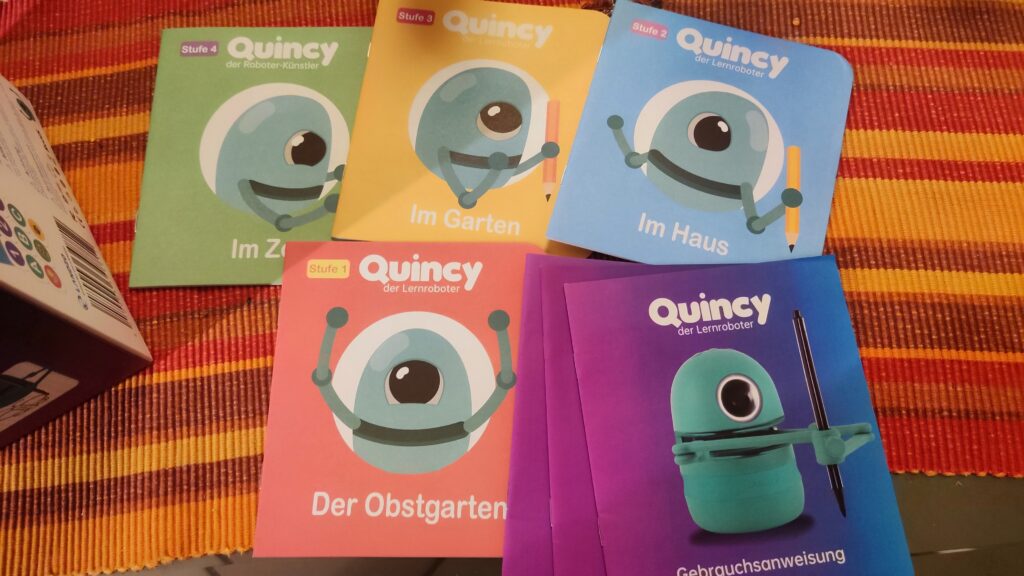
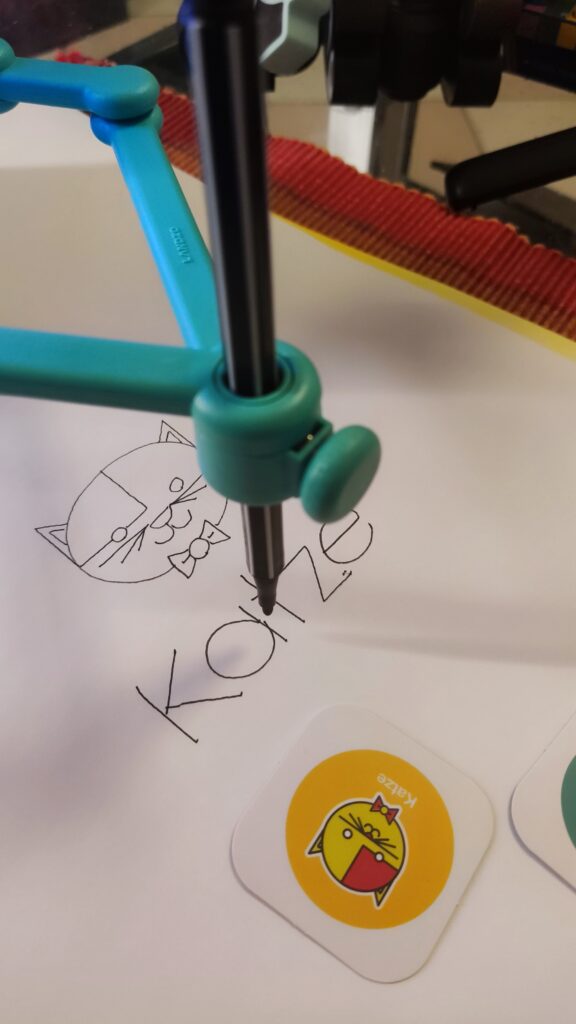
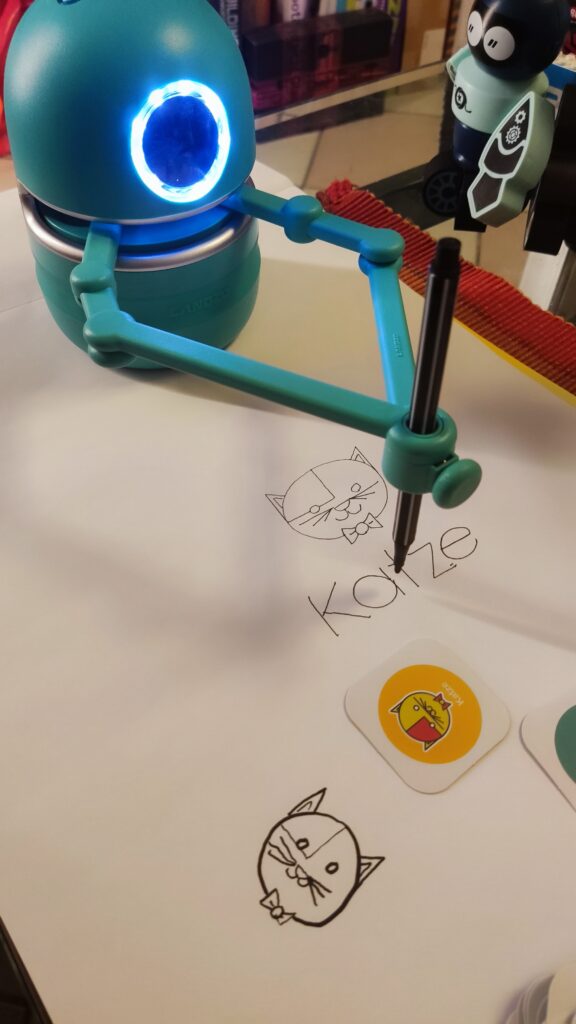
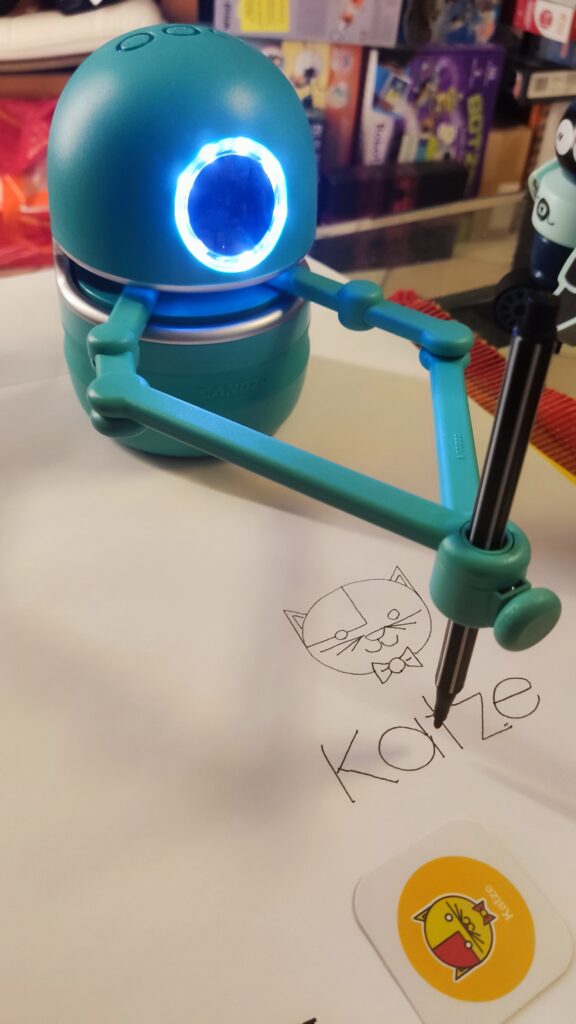

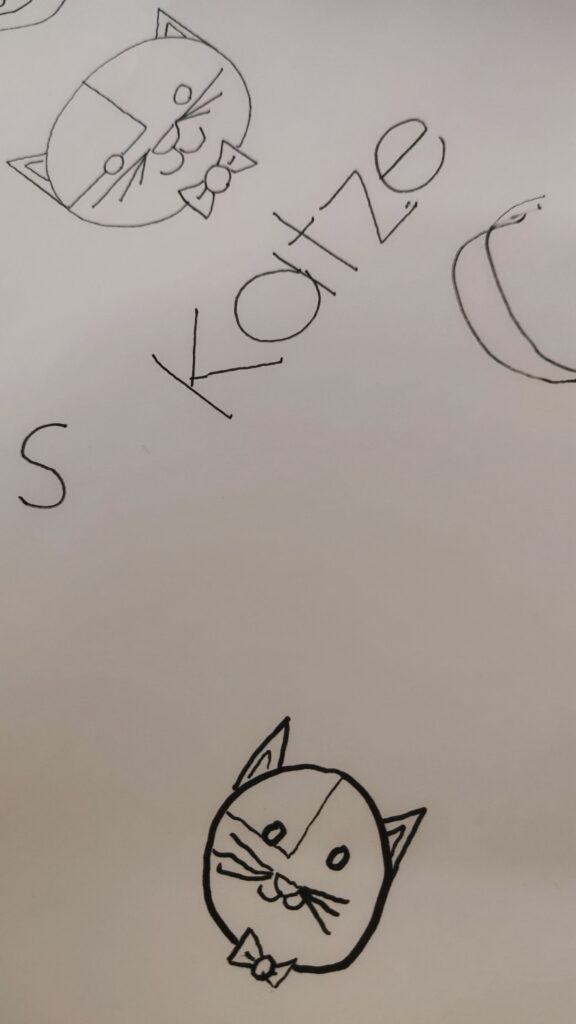
Creativity in motion: The modular robot Otto from HP Robots
The HP Robots Otto is a versatile, modular robot designed specifically for educational purposes. It offers students and teachers an exciting opportunity to immerse themselves in the world of robotics, 3D printing, electronics and programming. The robot was developed by HP as part of their robotics initiative and is particularly suitable for use in science, technology, engineering and mathematics (STEM) classes.
Key features of Otto:
- Modular design: Otto is a modular robot that allows students to build, program and customize it through extensions. This promotes an understanding of technology and creativity. The modular structure allows various components such as motors, sensors and LEDs to be added or replaced, which increases the learning curve for students.
- Programmability: The robot can be programmed with various programming languages, including block-based programming for beginners and Python and C++ for advanced programmers. This diversity allows students to continuously improve their coding skills and adapt to the complexity of the tasks.
- Sensors and functions: Equipped with ultrasonic sensors for obstacle detection, line tracking sensors and RGB LEDs, Otto offers numerous interactive possibilities. These features allow students to program complex tasks such as navigating courses or tracing lines. The sensors help to detect the environment and react accordingly.
- 3D printing and customizability: Students can design Otto’s outer parts themselves and produce them with a 3D printer. This allows for further personalization and customization of the robot. This creative freedom not only promotes technical understanding, but also artistic skills. Own parts can be designed and sensors can be attached to desired locations.
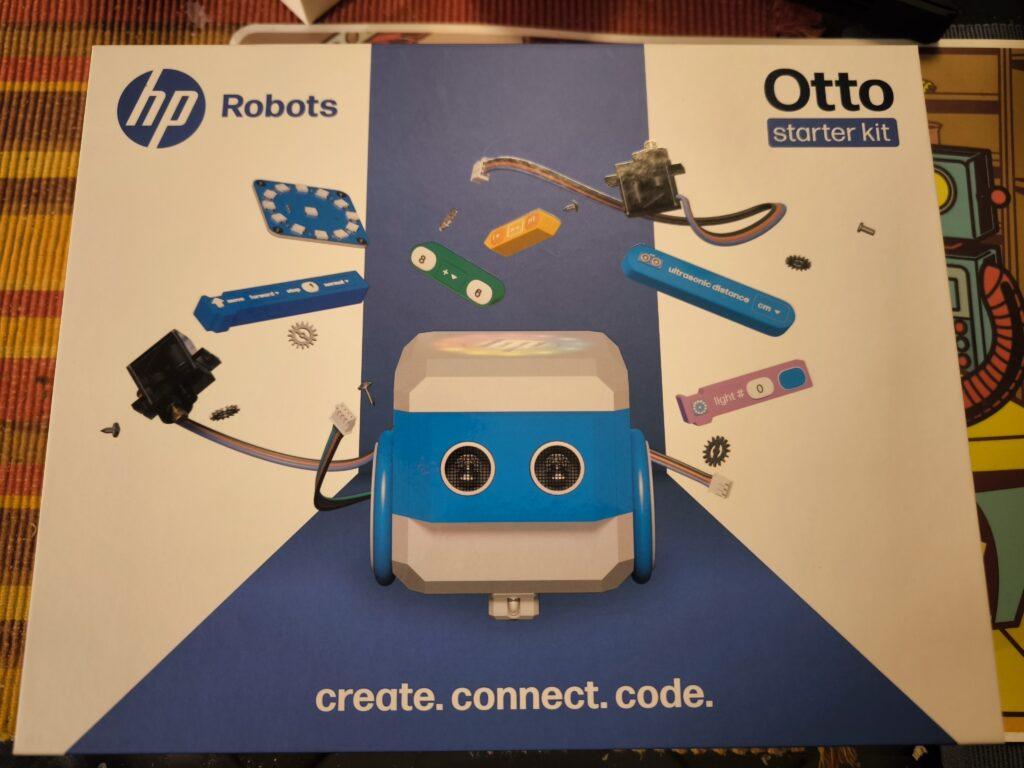
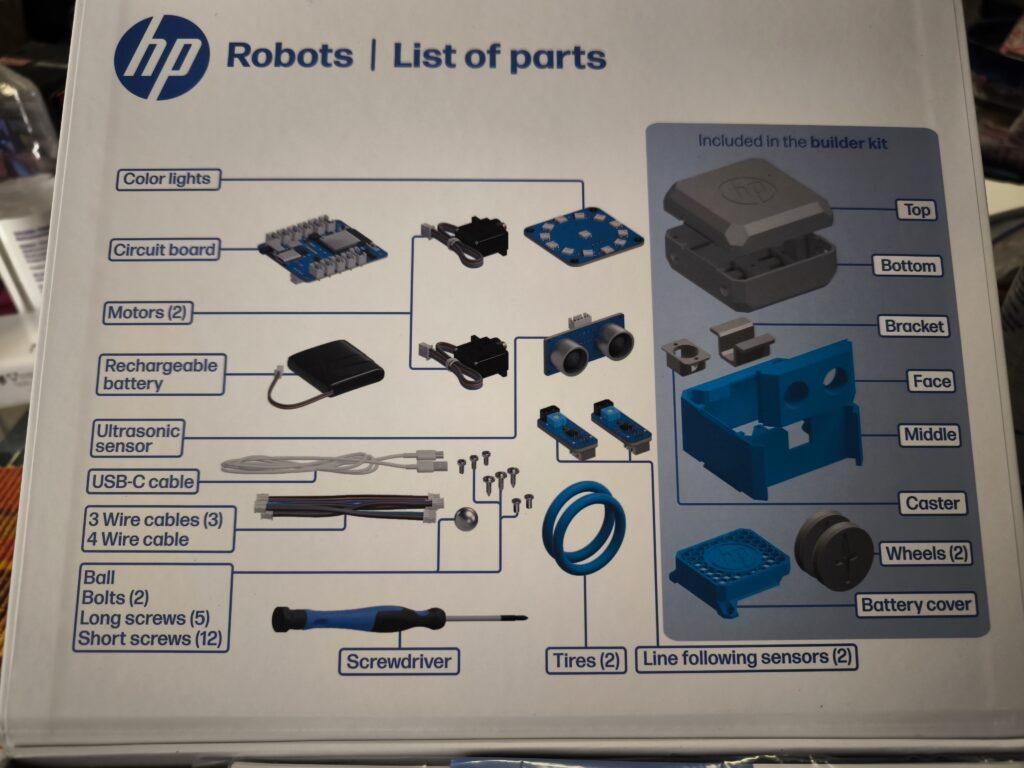
Educational approach:
Otto is ideal for use in schools and is aimed at students from the age of 8. Younger students can work under supervision, while older students from the age of 14 can also use and expand the robot independently. The kit contains all the necessary components to build a functioning robot, including motors, sensors, and a rechargeable battery.
Programming environments:
Otto is programmed via a web-based platform that runs on all operating systems. This platform offers different modes:
- Block-based programming: Similar to Scratch Jr., ideal for beginners. This visual programming makes it easier to get started in the world of programming and helps students understand basic concepts such as loops and conditions.
- Python: A Python editor is available for advanced users. Python is a popular language that works well for teaching because it is easy to read and write. Students can use Python to develop more complex algorithms and expand their programming skills.
- C++: Compatible with the Arduino IDE for users who have deeper programming knowledge. C++ offers a high degree of flexibility and allows students to access the hardware directly, allowing for their own advanced projects.
Expansion Kits:
In addition to the Starter Kit, there are several expansion kits. All expansion kits require the starter kit, as they are built on top of it.
Emote Expansion Kit:
- It includes components such as an LED matrix display, OLED display, and an MP3 player that allow the robot to display visual and acoustic responses.
- This kit is particularly suitable for creative projects where Otto should act as an interactive companion.
- The emote kit allows Otto to show emotions, mirror human interactions, and develop different personalities.
Sense Expansion Kit:
- With the Sense Kit, Otto can perceive its surroundings through various sensors.
- Included are sensors for temperature, humidity, light and noise as well as an inclination sensor. These enable a wide range of interactions with the environment.
- The kit is ideal for projects that focus on environmental detection and data analysis.
Interact Expansion Kit:
- The Interact kit expands Otto’s tactile interaction capability through modules such as push buttons, rotary knobs and accelerometers.
- It enables precise inputs and reactions, as well as measurement of acceleration.
- This kit is great for playful activities and interactive games.

Invent Expansion Kit:
- The Invent kit is specifically designed to encourage users‘ creativity. It allows the individual adaptation of Otto’s functionalities and design through 3D printing and additional modules as well as compatible clamping blocks.
- Users can design and print new accessories to make the robot unique.
- Equip Otto with legs and teach him to walk or make him fit for outdoor use off-road with chains.
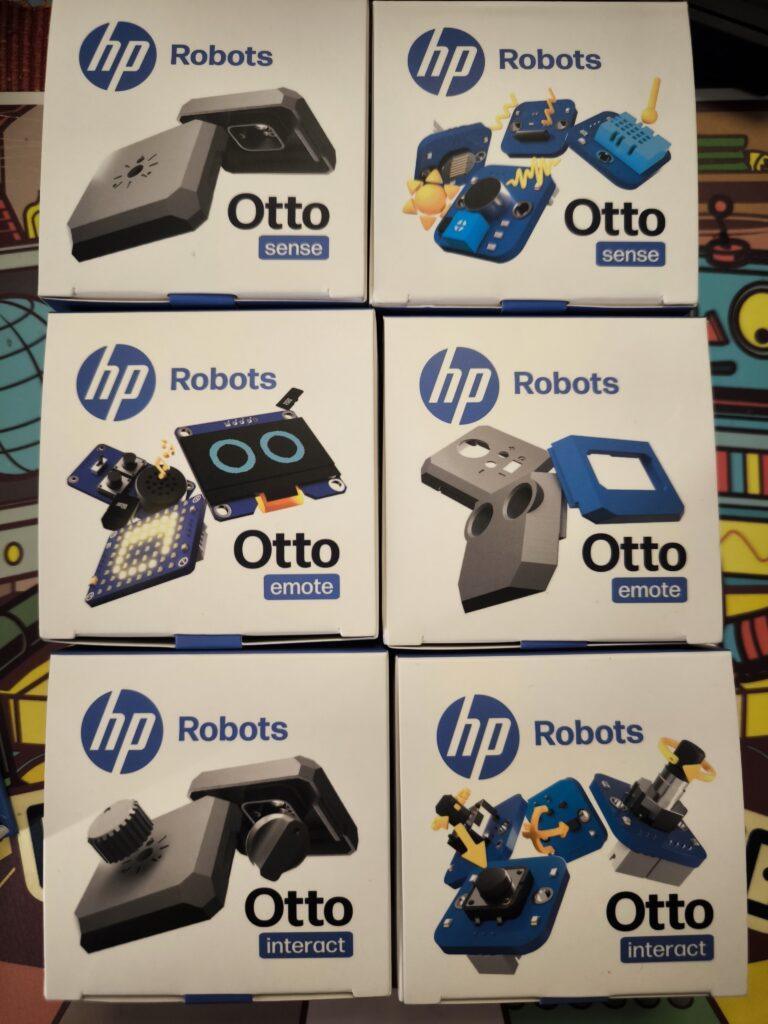
Use in the classroom:
Otto comes with extensive resources developed by teachers. These materials help teachers design effective STEM lessons without the need for prior knowledge. The robot can be used both in the classroom and at home. The didactic materials include:
- Curricula: Structured lesson plans that help teachers plan and execute lessons.
- Project ideas and worksheets: A variety of projects that encourage students to think creatively and expand their skills.
- Tutorials and videos: Additional learning materials to help students better understand complex concepts.
Conclusion:
The HP Robots Otto is an excellent tool for fostering technical understanding and creativity in students. Thanks to its modular design and diverse programming options, it offers a hands-on learning experience in the field of robotics and electronics. Ideal for use in schools, Otto provides teachers with a comprehensive platform to accompany students on an exciting journey into the world of technology. In particular, Otto’s versatility through the 3D-printed parts and expansion packs offers the opportunity to build the personal learning robot.
Kreativität in Bewegung: Der modulare Roboter Otto von HP Robots
Der HP Robots Otto ist ein vielseitiger, modularer Roboter, der speziell für Bildungszwecke entwickelt wurde. Er bietet Schülern und Lehrern eine spannende Möglichkeit, in die Welt der Robotik, 3D-Druck, Elektronik und Programmierung einzutauchen. Der Roboter wurde von HP als Teil ihrer Robotik-Initiative entwickelt und ist besonders für den Einsatz im MINT-Unterricht (Mathematik, Informatik, Naturwissenschaften und Technik) geeignet.
Hauptmerkmale von Otto:
- Modularer Aufbau: Otto ist ein modularer Roboter, der es Schülern ermöglicht, ihn zu bauen, zu programmieren und durch Erweiterungen individuell anzupassen. Dies fördert das Verständnis für Technik und Kreativität. Die modulare Struktur erlaubt es, verschiedene Komponenten wie Motoren, Sensoren und LEDs hinzuzufügen oder zu ersetzen, was die Lernkurve für Schüler erweitert.
- Programmierbarkeit: Der Roboter kann mit verschiedenen Programmiersprachen programmiert werden, darunter blockbasierte Programmierung für Anfänger sowie Python und C++ für Fortgeschrittene. Diese Vielfalt ermöglicht es Schülern, ihre Programmierfähigkeiten kontinuierlich zu verbessern und sich an die Komplexität der Aufgaben anzupassen.
- Sensoren und Funktionen: Ausgestattet mit Ultraschallsensoren zur Hinderniserkennung, Linienverfolgungssensoren und RGB-LEDs bietet Otto zahlreiche interaktive Möglichkeiten. Diese Funktionen ermöglichen es Schülern, komplexe Aufgaben wie das Navigieren durch Parcours oder das Verfolgen von Linien zu programmieren. Die Sensoren helfen dabei, die Umgebung zu erkennen und entsprechend zu reagieren.
- 3D-Druck und Anpassbarkeit: Schüler können Ottos äußere Teile selbst entwerfen und mit einem 3D-Drucker herstellen. Dies ermöglicht eine weitere Personalisierung und Anpassung des Roboters. Diese Kreativfreiheit fördert nicht nur technisches Verständnis, sondern auch künstlerische Fähigkeiten. Eigene Teile können entworfen und Sensoren an gewünschten Stellen angebracht werden.


Bildungsansatz:
Otto ist ideal für den Einsatz in Schulen gedacht und richtet sich an Schüler ab 8 Jahren. Jüngere Schüler können unter Aufsicht arbeiten, während ältere Schüler ab 14 Jahren den Roboter auch eigenständig nutzen und erweitern können. Das Kit enthält alle notwendigen Komponenten, um einen funktionierenden Roboter zu bauen, einschließlich Motoren, Sensoren und einer wiederaufladbaren Batterie.
Programmierumgebungen:
Die Programmierung von Otto erfolgt über eine webbasierte Plattform, die auf allen Betriebssystemen läuft. Diese Plattform bietet verschiedene Modi:
- Blockbasierte Programmierung: Ähnlich wie Scratch Jr., ideal für Anfänger. Diese visuelle Programmierung erleichtert den Einstieg in die Welt der Programmierung und hilft Schülern, grundlegende Konzepte wie Schleifen und Bedingungen zu verstehen.
- Python: Für fortgeschrittene Benutzer steht ein Python-Editor zur Verfügung. Python ist eine beliebte Sprache, die sich gut für den Unterricht eignet, da sie einfach zu lesen und zu schreiben ist. Schüler können mit Python komplexere Algorithmen entwickeln und ihre Fähigkeiten im Bereich der Programmierung erweitern.
- C++: Kompatibel mit der Arduino IDE für Nutzer, die tiefere Programmierkenntnisse haben. C++ bietet eine hohe Flexibilität und ermöglicht es Schülern, direkt auf die Hardware zuzugreifen, was eigene fortgeschrittene Projekte ermöglicht.
Expansion/Erweiterungs Kits:
Zusätzlich zum Starter Kit gibt es mehrere Erweiterungskits. Alle Erweiterungskits setzen das Starter-Kit voraus, da sie auf dessen Basis aufgebaut werden.
Emote Expansion Kit:
- Es enthält Komponenten wie ein LED-Matrix-Display, OLED Display und einen MP3-Player, die es dem Roboter ermöglichen, visuelle und akustische Reaktionen darzustellen.
- Dieses Kit eignet sich besonders für kreative Projekte, bei denen Otto als interaktiver Begleiter fungieren soll.
- Das Emote-Kit ermöglicht es Otto, Emotionen zu zeigen, menschliche Interaktionen zu spiegeln und verschiedene Persönlichkeiten zu entwickeln.
Sense Expansion Kit:
- Mit dem Sense-Kit kann Otto seine Umgebung durch verschiedene Sensoren wahrnehmen.
- Enthalten sind Sensoren für Temperatur, Luftfeuchtigkeit, Licht und Geräusche sowie ein Neigungssensor. Diese ermöglichen vielfältige Interaktionen mit der Umwelt.
- Das Kit ist ideal für Projekte, die sich auf Umwelterkennung und Datenanalyse konzentrieren.
Interact Expansion Kit:
- Das Interact-Kit erweitert Ottos Fähigkeit zur taktilen Interaktion durch Module wie Drucktasten, Drehknöpfe und Beschleunigungsmesser.
- Es ermöglicht präzise Eingaben und Reaktionen sowie Messung der Beschleunigung.
- Dieses Kit eignet sich hervorragend für spielerische Aktivitäten und interaktive Spiele.
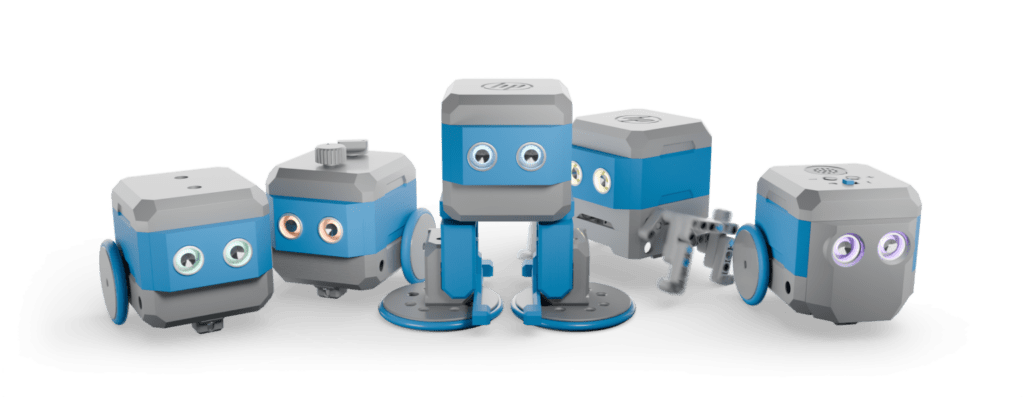
Invent Expansion Kit:
- Das Invent-Kit ist speziell darauf ausgelegt, die Kreativität der Benutzer zu fördern. Es erlaubt die individuelle Anpassung von Ottos Funktionalitäten und Design durch 3D-Druck und zusätzliche Module sowie kompatible Klemmbausteine.
- Benutzer können neue Zubehörteile entwerfen und drucken, um den Roboter einzigartig zu machen.
- Statte Otto mit Beinen aus und bring ihm das Laufen bei oder mache ihn mit Ketten fit für den Outdoor Einsatz im Gelände.

Einsatz im Unterricht:
Otto wird mit umfangreichen Ressourcen geliefert, die von Lehrern entwickelt wurden. Diese Materialien unterstützen Lehrer dabei, einen effektiven MINT-Unterricht zu gestalten, ohne dass Vorkenntnisse erforderlich sind. Der Roboter kann sowohl im Klassenraum als auch zu Hause eingesetzt werden. Die didaktischen Materialien umfassen:
- Lehrpläne: Strukturierte Unterrichtspläne, die den Lehrern helfen, den Unterricht zu planen und durchzuführen.
- Projektideen und Arbeitsblätter: Eine Vielzahl von Projekten, die Schüler dazu anregen, kreativ zu denken und ihre Fähigkeiten zu erweitern.
- Tutorials und Videos: Zusätzliche Lernmaterialien, die Schülern helfen, komplexe Konzepte besser zu verstehen.
Fazit:
Der HP Robots Otto ist ein hervorragendes Werkzeug zur Förderung von technischem Verständnis und Kreativität bei Schülern. Durch seine modulare Bauweise und die vielfältigen Programmiermöglichkeiten bietet er eine praxisorientierte Lernerfahrung im Bereich der Robotik und Elektronik. Otto ist ideal für den Einsatz in Schulen und bietet Lehrern eine umfassende Plattform, um Schüler auf eine spannende Reise in die Welt der Technologie zu begleiten. Besonders Ottos Vielseitigkeit durch die 3D-gedruckten Teile und Erweiterungspakete bieten die Möglichkeit, den persönlichen Lernroboter zu bauen.
Robots-Blog showing all the robots at Spielwarenmesse Nuremberg 2025
Playtastic KI-Roboter mit ChatGPT-Assistent
Nach dem Auspacken des Roboters hatte ich den Eindruck, ein Tablet auf Rädern zu meiner Robotersammlung hinzuzufügen. Der kleine Roboter, der sich selbst „Anna“ nennt, wie ich später herausfinden sollte, hatte auf jeden Fall ein Android-Tablet als Gesicht. Ein Tablet-Roboter.
Nach dem Einschalten erwartete mich jedoch nicht der übliche Einrichtungsprozess, wie er bei Android-Geräten üblich ist. Stattdessen wurde ich mit Musik und einem kurzen Animationsvideo begrüßt. Danach landete ich, nach einer kurzen Wartezeit (die nur beim ersten Start auftrat), auf einer kindlich-verspielten App-Übersicht. Meine erste Idee war, im Einstellungsmenü zunächst eine Verbindung zum WLAN herzustellen. Im Handbuch hatte ich bereits gelesen, dass der Roboter nur mit einem 2,4-GHz-WLAN kompatibel ist. Das WLAN meiner FritzBox arbeitet im Dual-Mode und stellt sowohl ein 5-GHz- als auch ein 2,4-GHz-Signal zur Verfügung. Der Roboter fand dieses WLAN, fragte nach dem Passwort, bestätigte die richtige Eingabe und verband sich – allerdings nur für wenige Sekunden, bevor er wieder „nicht verbunden“ anzeigte. Anscheinend mag er ausschließlich reines 2,4-GHz-WLAN. Nachdem ich mein reines 2,4-GHz-WLAN ausgewählt hatte, gab es keine weiteren Verbindungsprobleme.
Die Android-Betriebssystemversion und die installierten Apps waren anscheinend aktuell; zumindest wurden keine Updates gefunden. Neben den vorinstallierten Lern-, Musik- und Spiele-Apps fielen mir direkt die YouTube-(Kids)- und Spotify-App auf. Hier ahnte ich auch etwas Spaß für Erwachsene!
Der erste Start der YouTube-App (nachdem das WLAN eine Internetverbindung bot) forderte leider ein Update der Google-Dienste, was wiederum die Anmeldung mit einem Google-Konto erforderte. Macht es besser nicht wie ich und legt kein neues Google-Konto direkt über das Display des Roboters an. Nutzt stattdessen einen Computer oder euer Smartphone und gebt dem Roboter anschließend nur die Zugangsdaten. Das geht deutlich schneller als über das etwas träge „Tablet“ des Roboters.
Nach der Anmeldung gelang dann auch der Start der YouTube-App. Dabei stellte ich fest, dass es sich um die YouTube-Kids-App handelte, die ich bisher nicht kannte. Die App bietet kindgerechte Videos für verschiedene Altersstufen, aber nicht das vollwertige YouTube-Erlebnis, wie man es beispielsweise vom Fernseher kennt. Es können verschiedene Kinder-/Nutzerprofile angelegt werden, und mit einem „Eltern-Account“ lässt sich genau steuern, welche Videos und Kanäle verfügbar sind oder ob das Kind eigenständig andere Kanäle suchen darf.
Für erwachsene Nutzer bleiben immerhin alle Spotify-Inhalte verfügbar. Die vorinstallierte Spotify-App funktioniert identisch zu der Version auf meinem Smartphone. Der Klang des Roboters ist laut und basslastig; manchmal hört man dadurch das Plastikgehäuse etwas vibrieren. Für Kinder und ältere Karaoke-Fans gibt es in der App „KinderFernsehen“ eine Karaoke-Videosammlung. Ein mitgeliefertes Mikrofon lässt sich an der Rückseite des Roboters einstecken. Nach dem Einschalten des Mikrofons wird der eigene Gesang mit ordentlich Hall-Effekt durch den Roboter wiedergegeben. Ein Anschluss für ein zweites Mikrofon für Duett-Partner ist ebenfalls vorhanden; allerdings wird nur ein Mikrofon mitgeliefert – ein Tablet-Karaoke-Musik-Video-Roboter.
In der KinderFernsehen-App finden sich bekannte Videoreihen (wie Shaun das Schaf), Musik- und Lerninhalte sowie Spiele. Außerhalb dieser App gibt es die üblichen Anwendungen wie Wecker, Stoppuhr oder Bildergalerie sowie diverse weitere Lern-Apps: Rechnen, Malen, Schreiben, Musizieren oder Sprachen lernen – für fast alles gibt es eine App. Und wenn nicht, bietet der „Kinderladen“ eine abgespeckte Version des App-Stores mit Spielen, Lern-Apps und anderen kinderfreundlichen Inhalten. Ein Tablet-Karaoke-Musik-Video-Lern-Roboter also! Andere Android-Apps lassen sich hier jedoch nicht finden. Mir ist es auch nicht gelungen, fremde Apps zu installieren – weder per SD-Karte noch per Browser-Download –, da der integrierte Browser nur vorher freigegebene Webseiten öffnet. Wie man diese hinzufügt, habe ich nicht herausgefunden. Im PIN-geschützten „Elternmodus“ konnte ich zwar installierte Apps ausblenden (quasi vor Kindern verstecken), aber keine neuen Apps „sideloaden“. Es gibt einen erweiterten Modus, der nach mehrfachem Tippen auf die Versionsnummer des Roboters in den Einstellungen erscheint – leider geschützt durch ein mir unbekanntes Passwort. Was sich wohl dahinter verbirgt? Vielleicht die Möglichkeit zum Installieren eigener Apps?
Die App „Musik und Tanz“ öffnet einen Musikplayer, mit dem MP3s – auch von einer eingesteckten SD-Karte – abgespielt werden können. Der Unterschied zur normalen „Musik“-App: Der Roboter tanzt zur abgespielten Musik und fährt mehr oder weniger wild „tanzend“ durch die Gegend. Ich hätte mir an dieser Stelle gewünscht, eigene Bewegungsabläufe programmieren zu können – oder sogar eine Lern-App, die mir das Programmieren des Roboters beibringt und die Möglichkeiten der integrierten Motoren meines „Roboter-Tablets“ nutzbar macht. Vielleicht sogar in Kombination mit der integrierten Kamera einen Linienfolger programmieren? Vielleicht wird hierfür ja irgendwann noch eine passende App entwickelt.
Die integrierte Kamera lässt sich zum Aufnehmen von Fotos und Videos in niedriger Auflösung nutzen. Leider habe ich keine App gefunden, die die Kamera für Bewegungsspiele nutzt – so wie beim Miko 3-Roboter bekannt. Vielleicht dürfen wir auch hier noch auf Erweiterungen per App hoffen?
Und dann gibt es noch den ChatGPT-Assistenten-Modus: Auf dem Display erscheint ein Robotergesicht, mit dem man sich auch ohne eingestecktes Mikrofon unterhalten kann. Die Antworten kommen dabei nach etwas Verzögerung von einer ChatGPT-Instanz. Diese scheint auf Unterhaltungen mit Kindern spezialisiert zu sein und schlägt automatisch Themen wie Dinosaurier, Weltraum oder Tiere vor. Jede Antwort liefert direkt Ideen für neue Nachfragen oder Themenvorschläge und führt so aktiv durch das Gespräch. Die ChatGPT-Instanz hat keinen Zugriff auf aktuelle Online-Inhalte und ist ausreichend moderiert: Nicht kindgerechte Themen werden in vielen Fällen ignoriert oder übergangen. Zu genaue Nachfragen oder geschicktes Prompting können jedoch manchmal zumindest fragwürdige Inhalte liefern – allerdings bleiben aktiv vorgeschlagene Themen stets kindgerecht (besonders gerne Dinosaurier). Auch Rekorde aus der Tierwelt oder Umweltphänomene werden als Gesprächsthemen vorgeschlagen.
Ein Tablet-Karaoke-Musik-Video-Lern-KI-Assistenten-Roboter.
Der Roboter ist ein vielseitiges Spielzeug mit gut funktionierenden vorinstallierten Apps. Für Erwachsene gibt es nur wenige Inhalte; diese sind hier aber definitiv nicht die Zielgruppe. Als auffälliger Spotify-Player mit einigen Zusatzfeatures ist der Roboter jedoch auch für Erwachsene interessant – erwartet aber keine Höchstleistung vom integrierten Tablet! Es ist eindeutig nur für die mitgelieferten Apps ausgelegt; diese sind dafür kindgerecht und sicher … solange man keine allzu neugierigen Fragen an den ChatGPT-Assistenten stellt. Insgesamt handelt es sich um ein lehrreiches Spielzeug für Kinder – auch um erste Erfahrungen im Umgang mit KI zu sammeln. Für den Preis bekommt man sonst nur ein günstiges Tablet; hier gibt es jedoch gleich einen ganzen Roboter dazu!
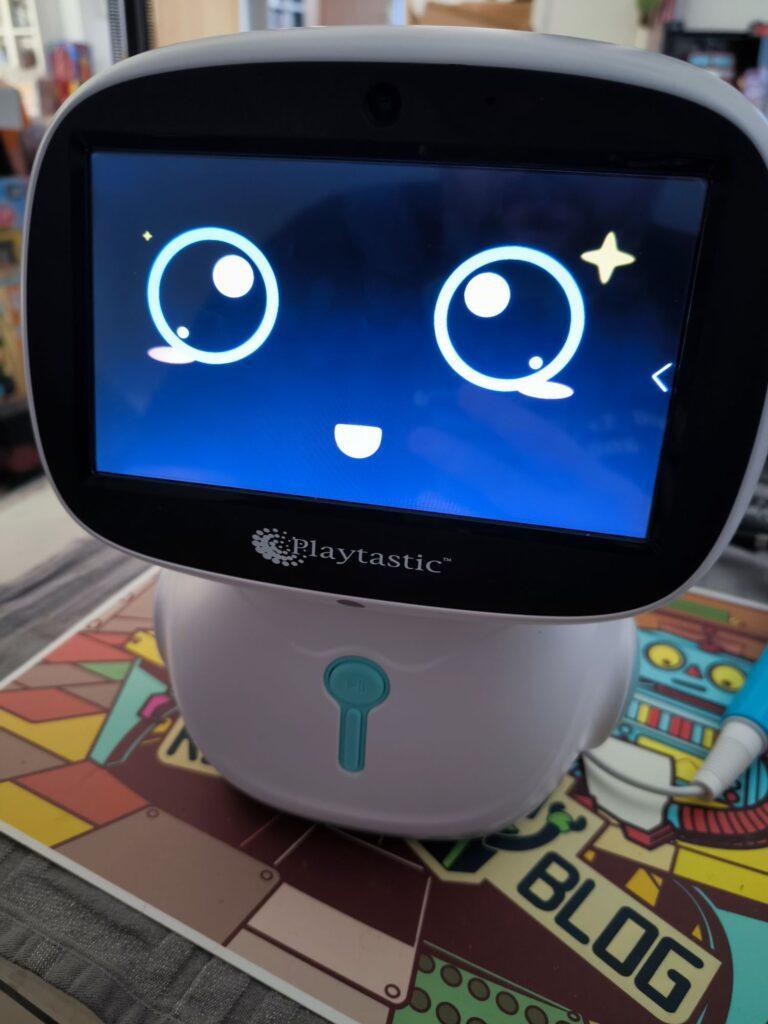
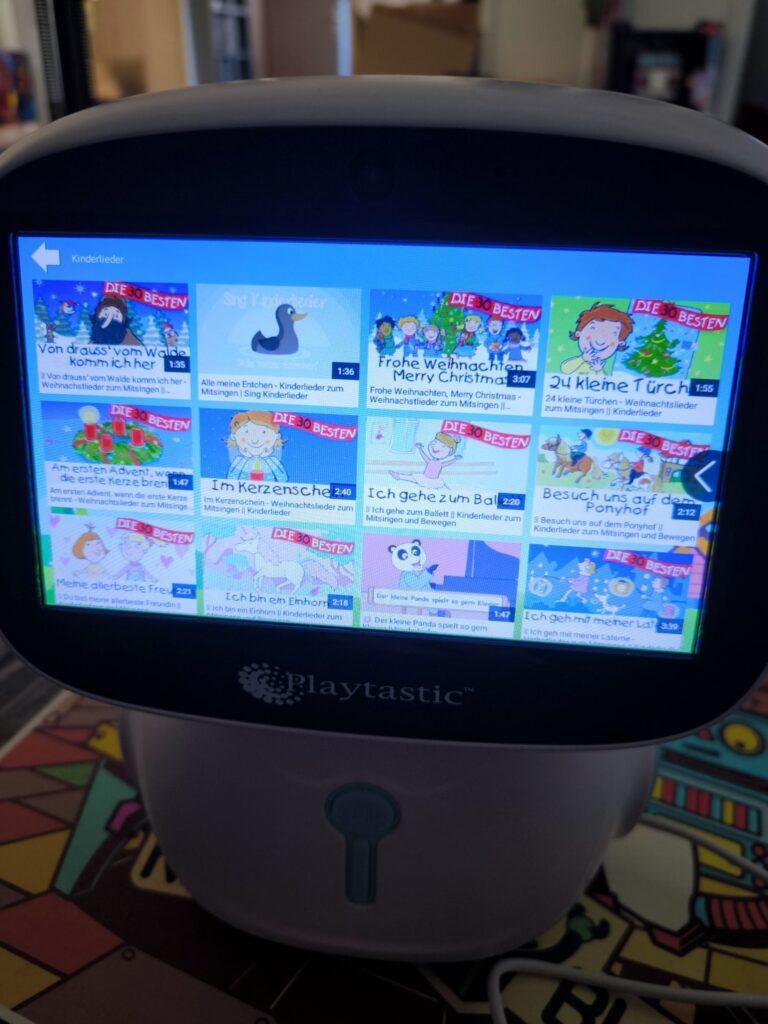
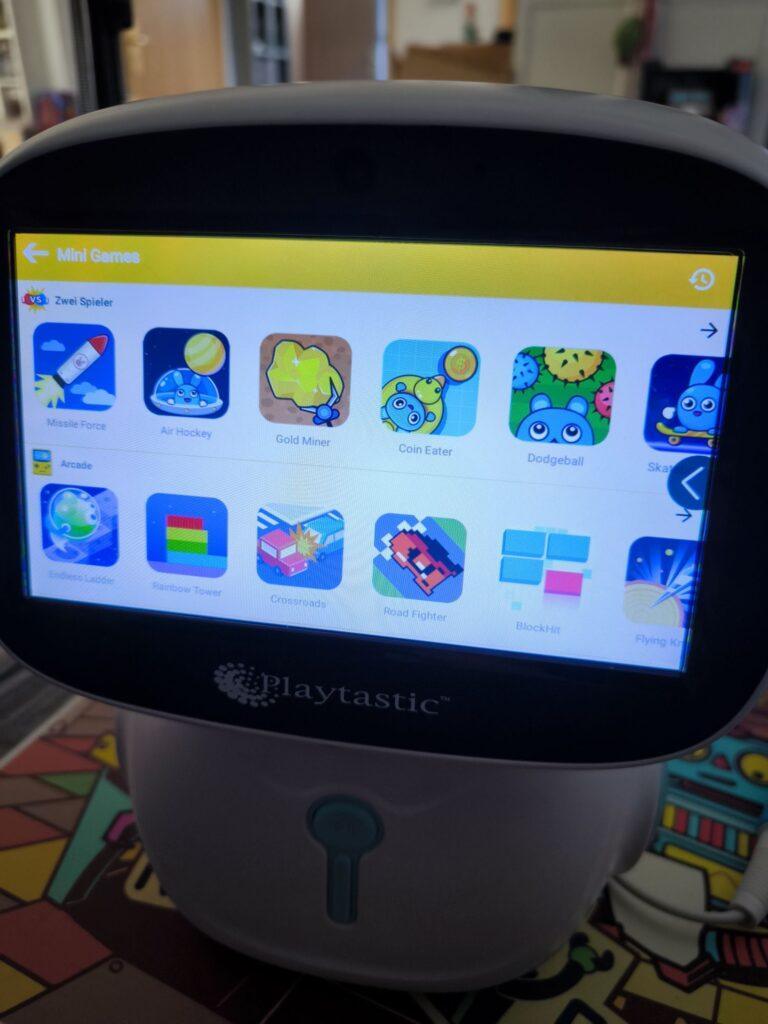
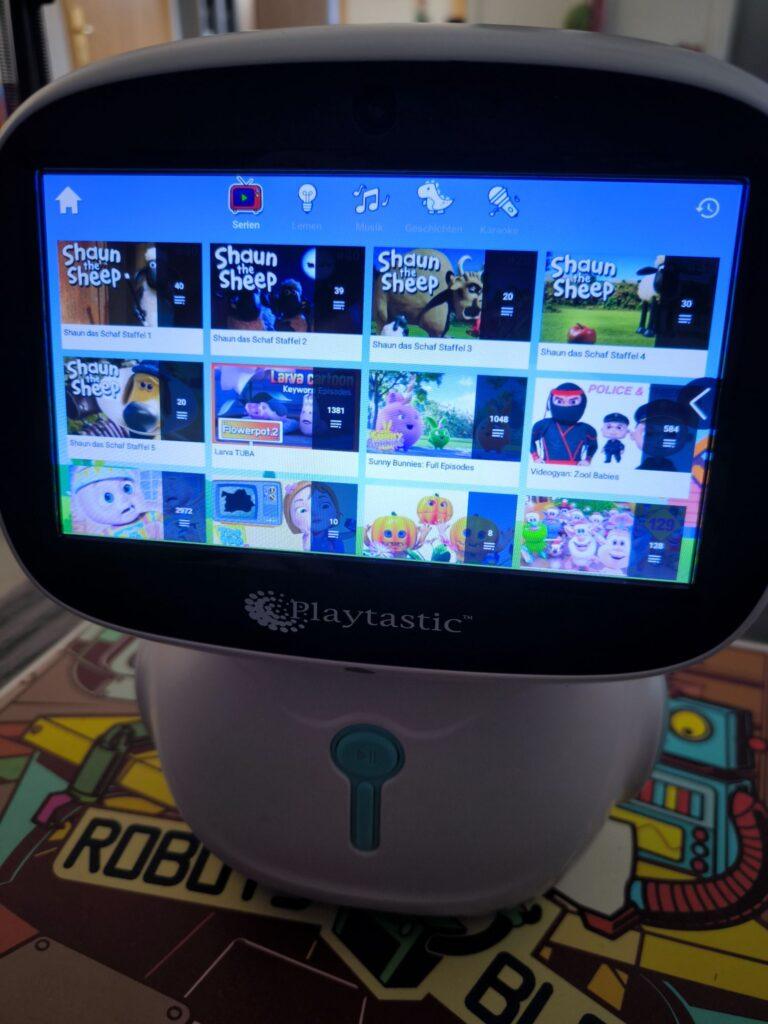
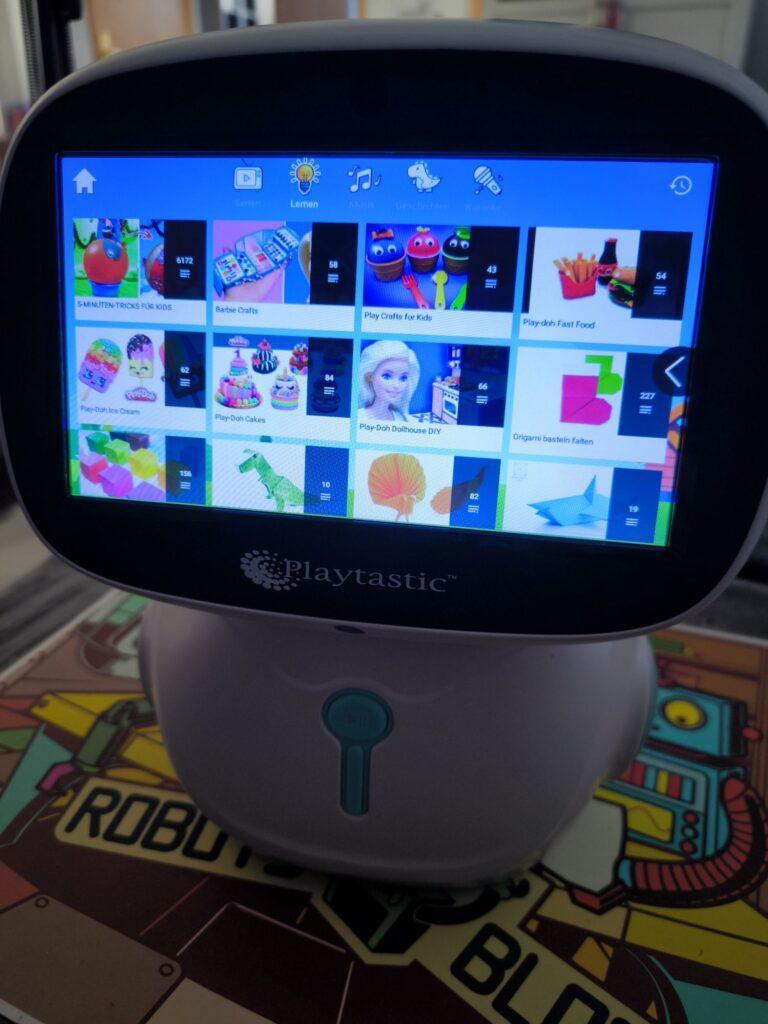
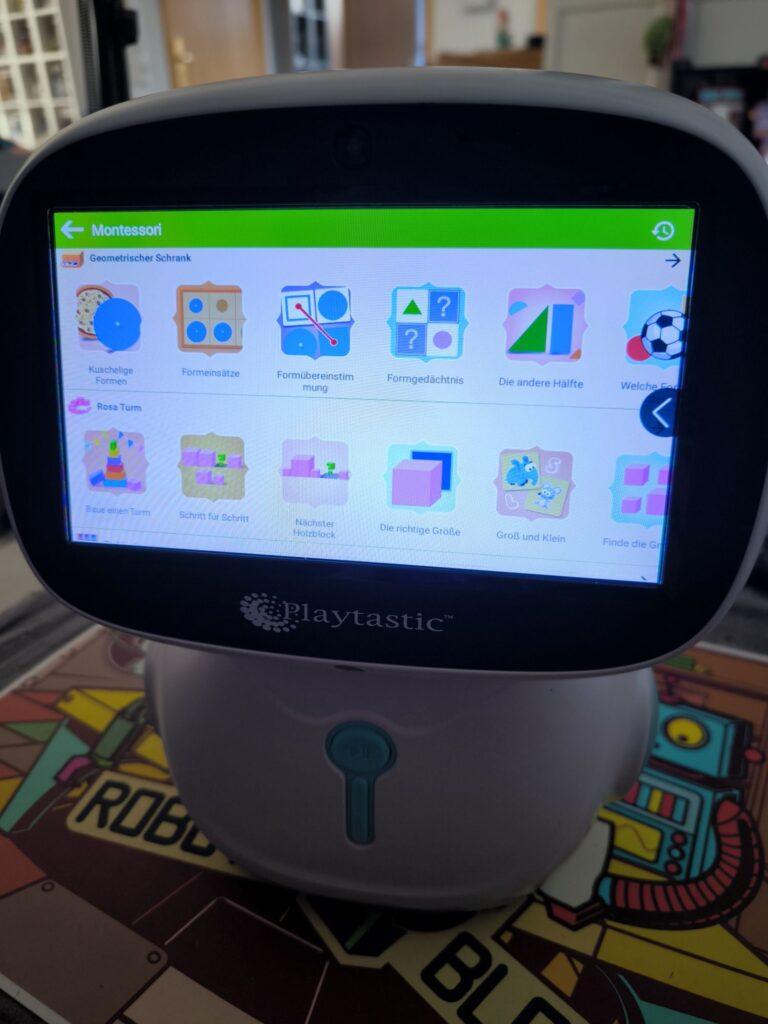
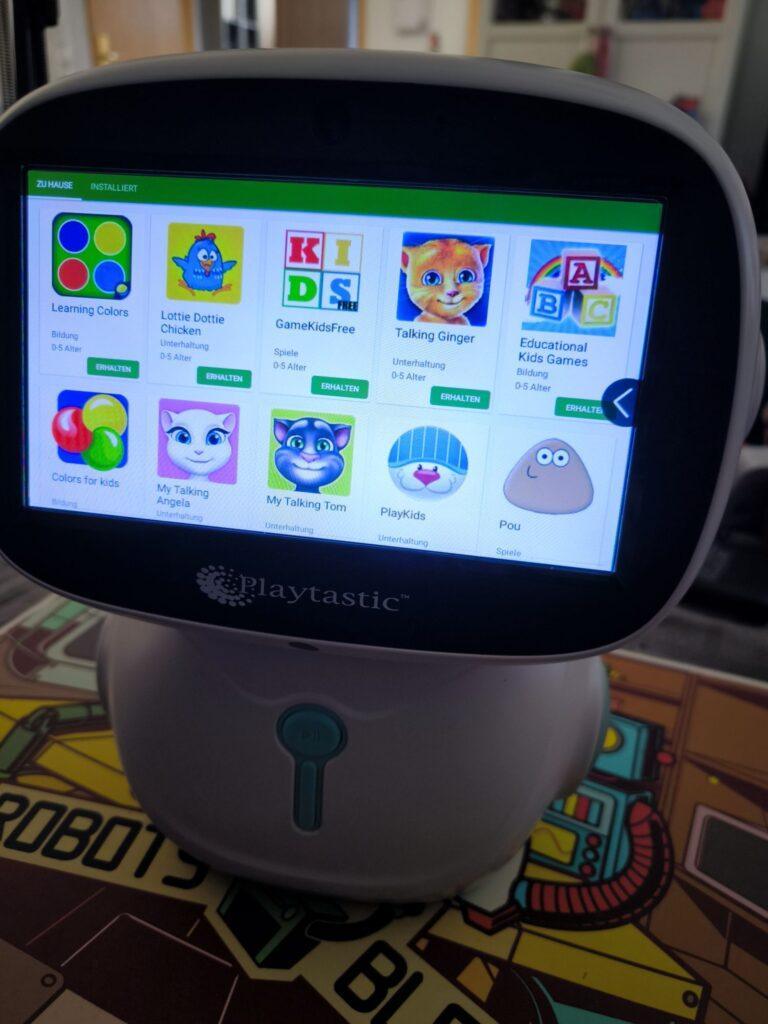
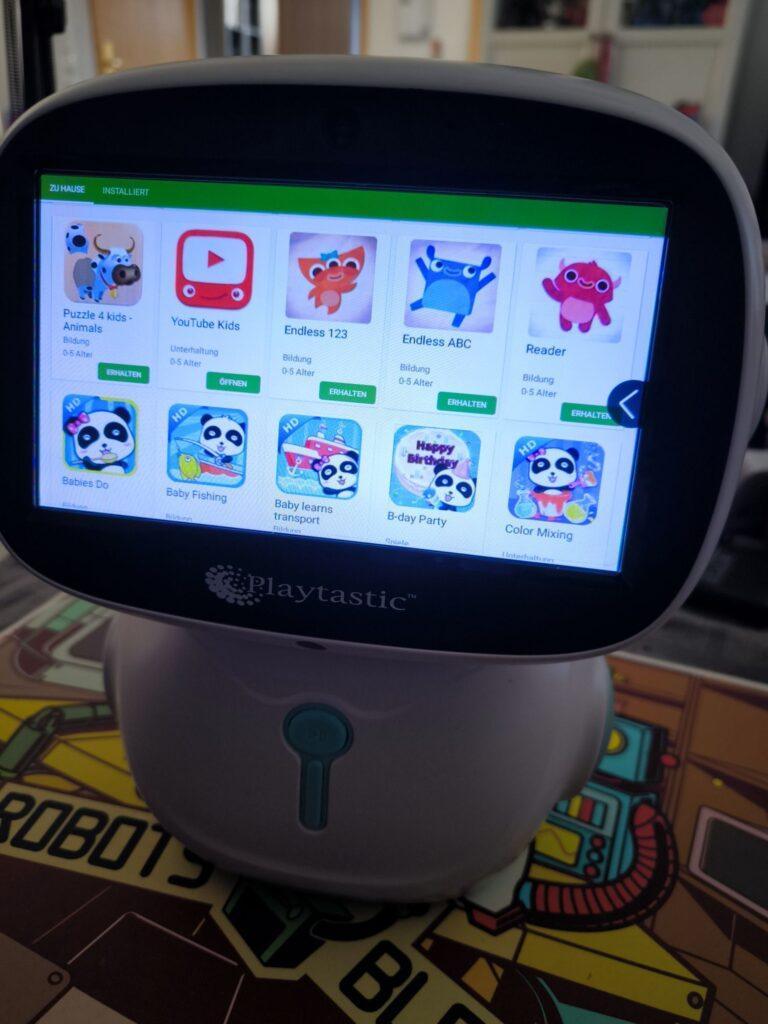
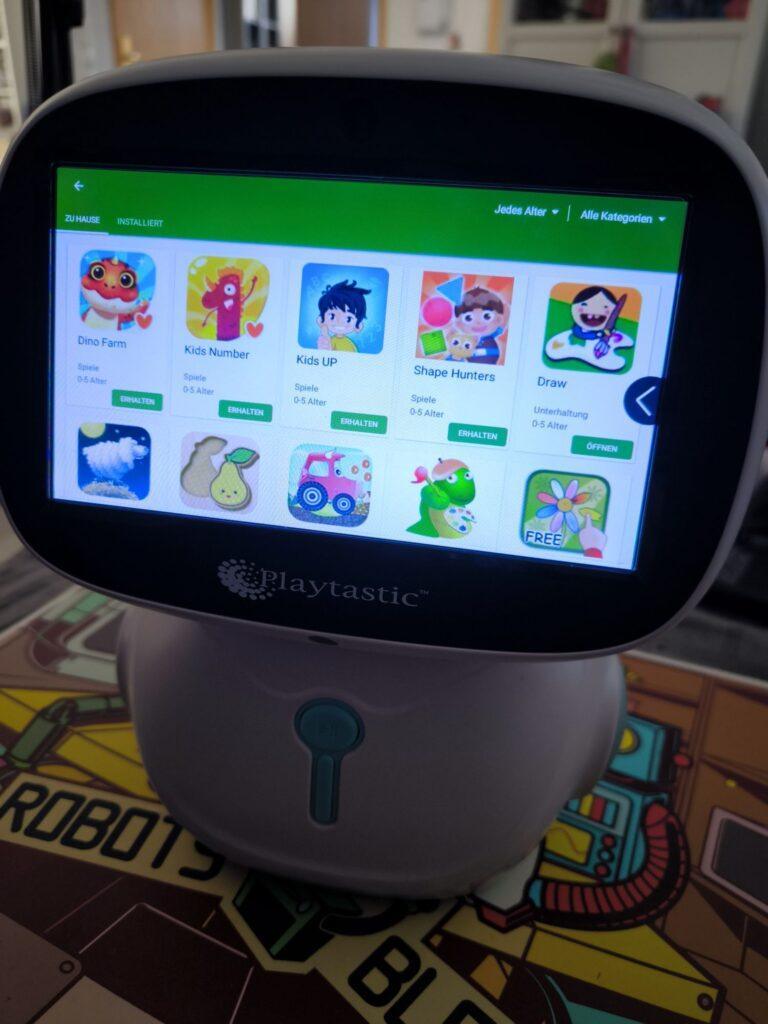
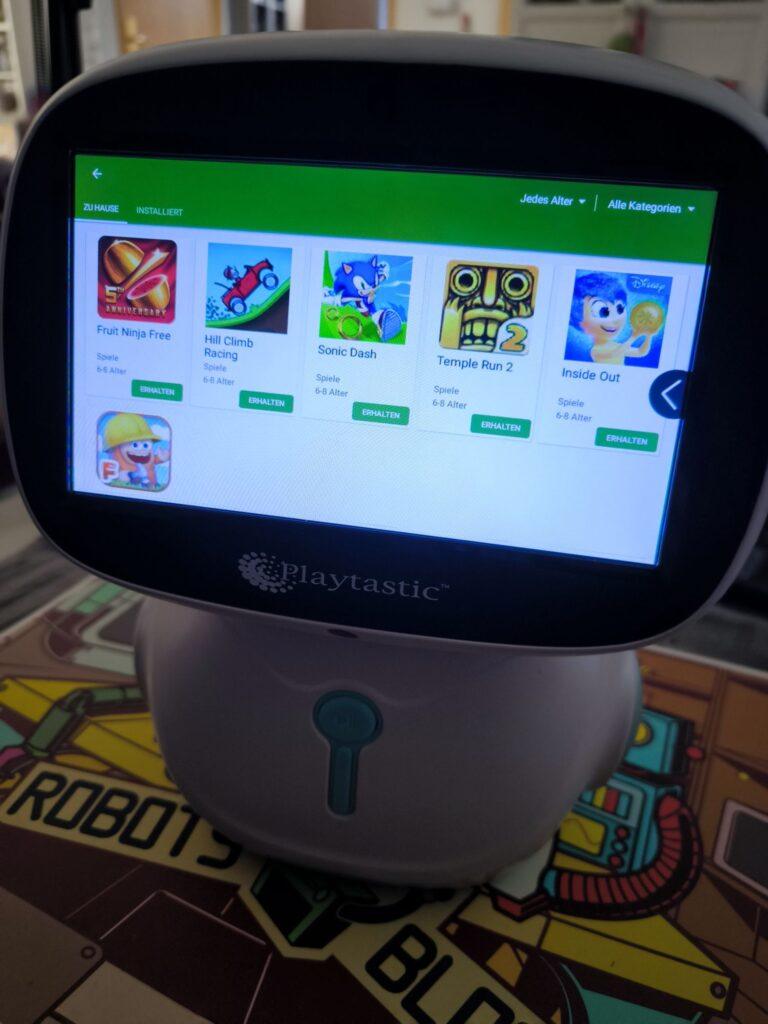
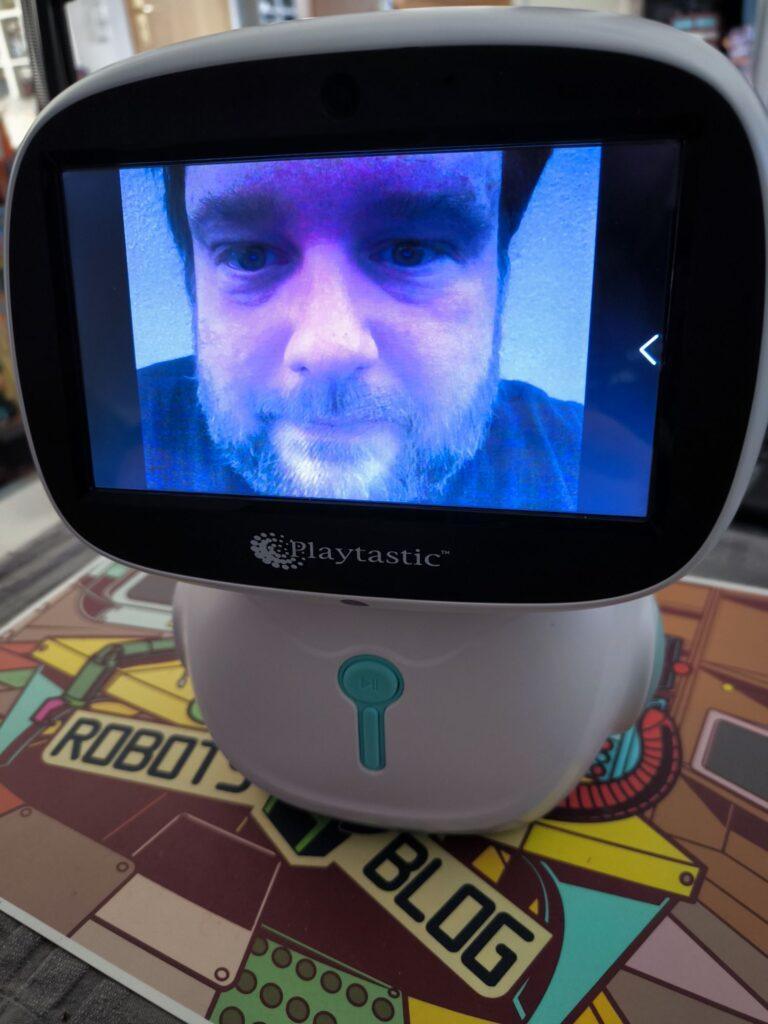
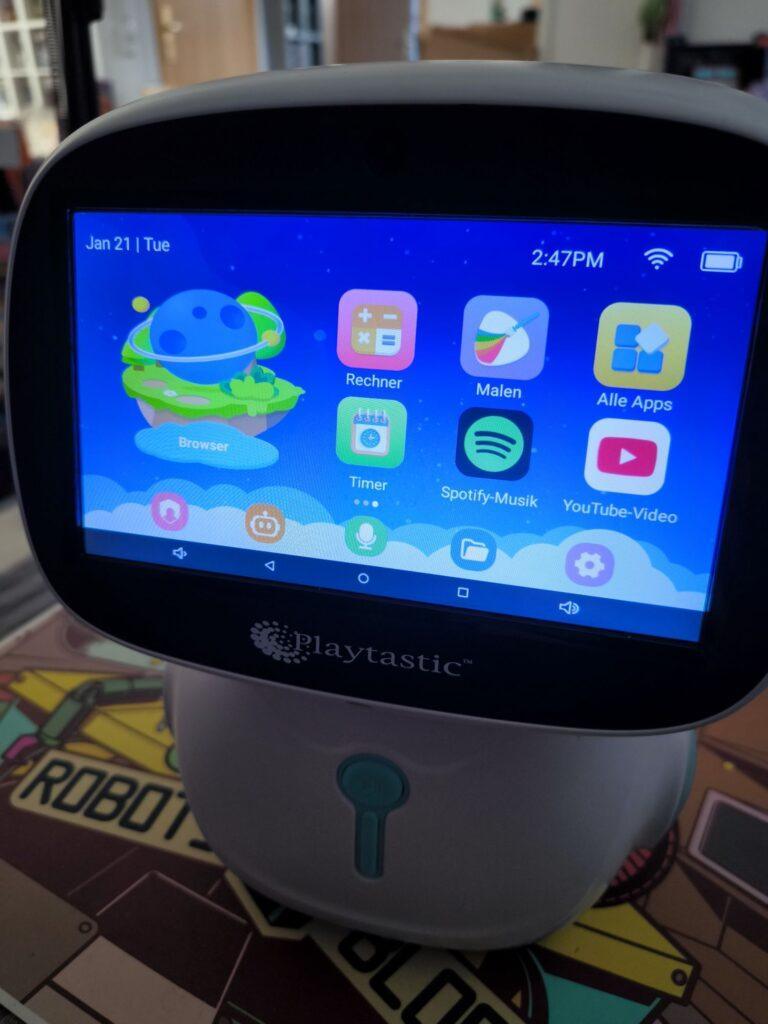
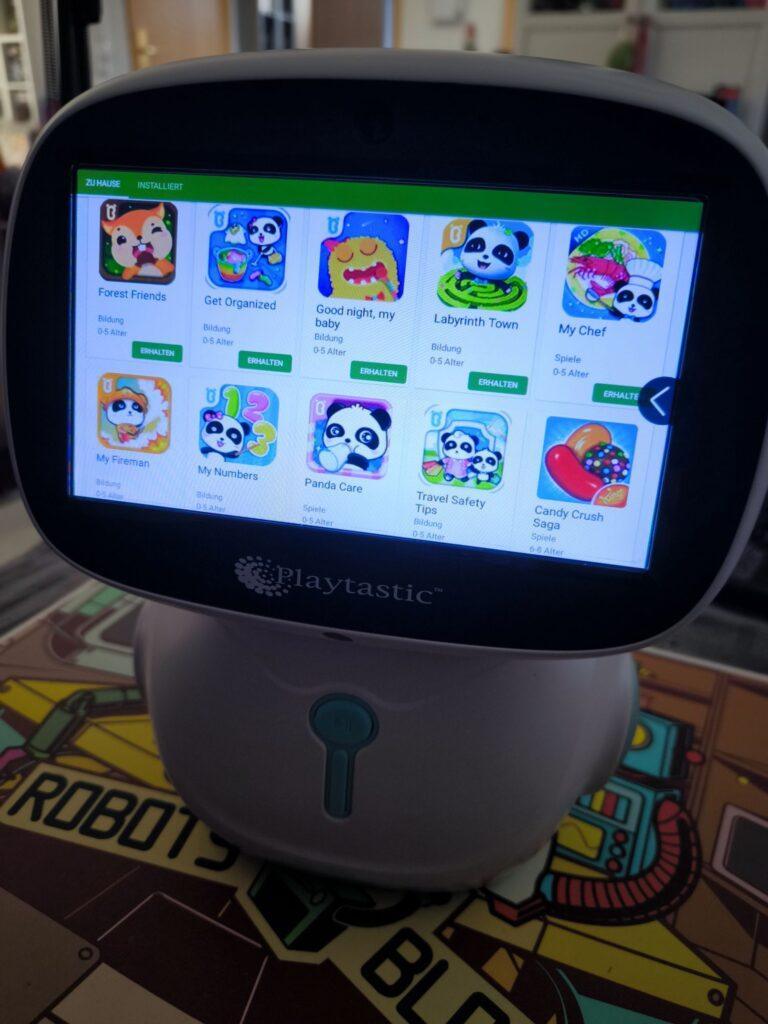
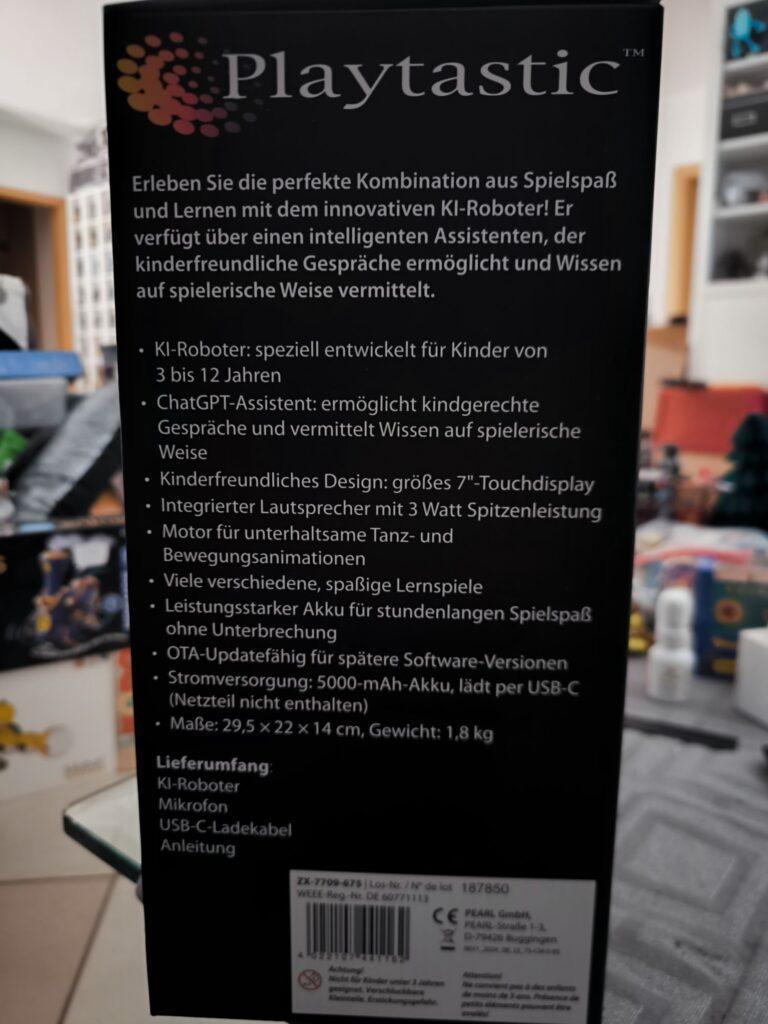
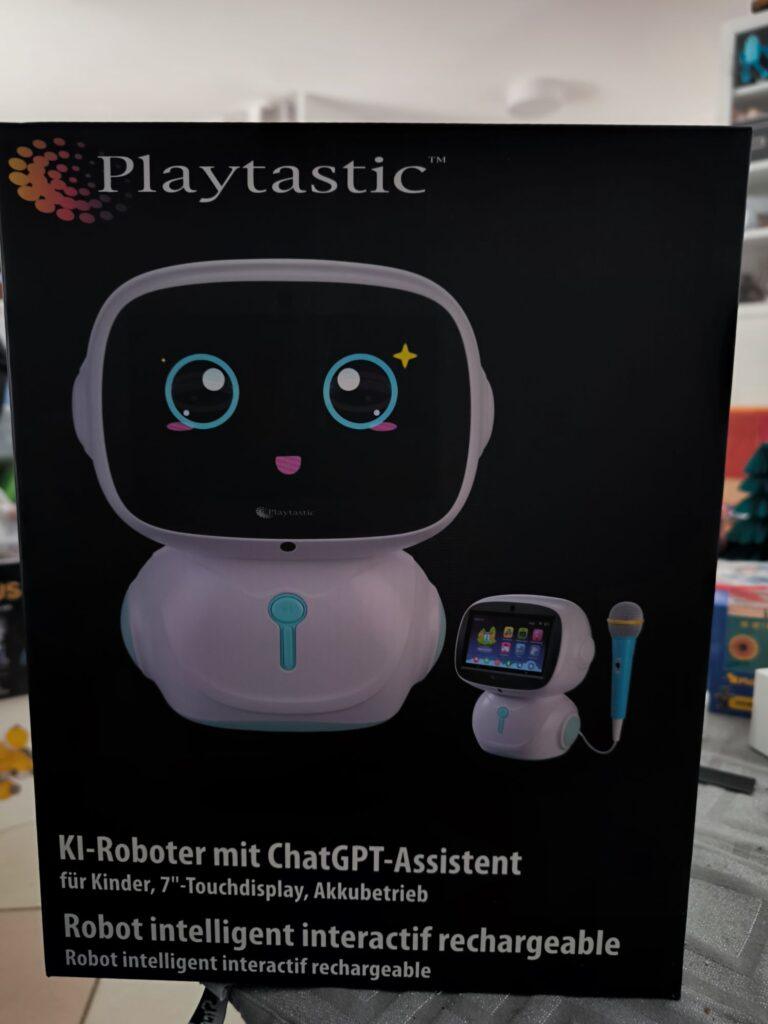
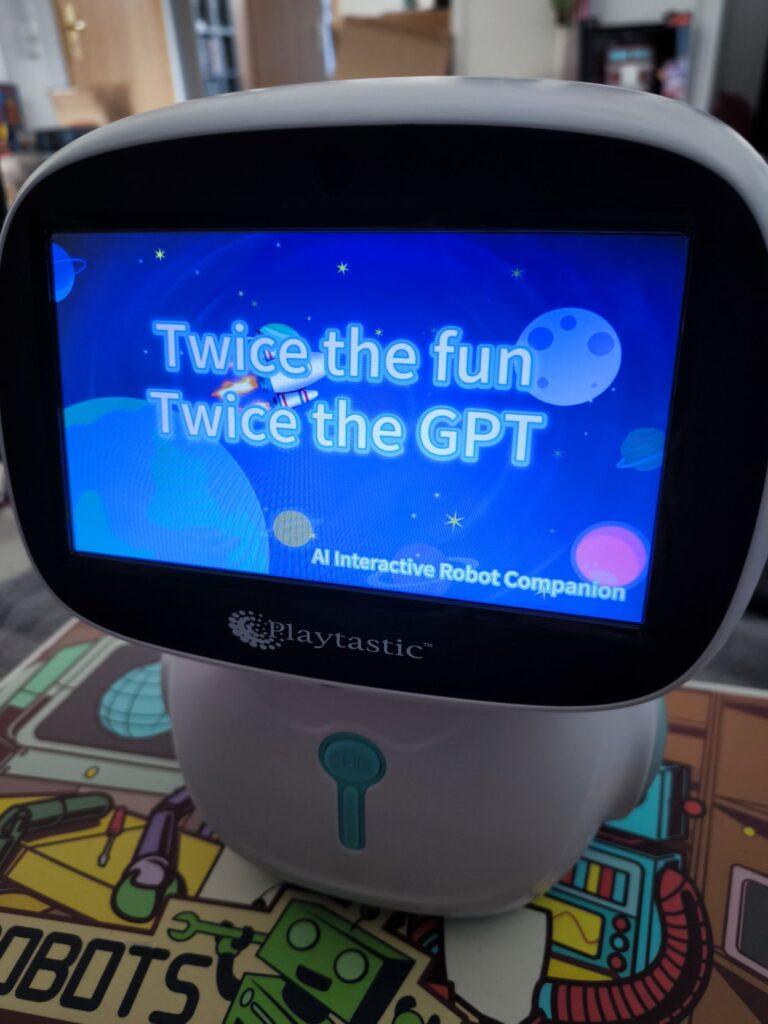
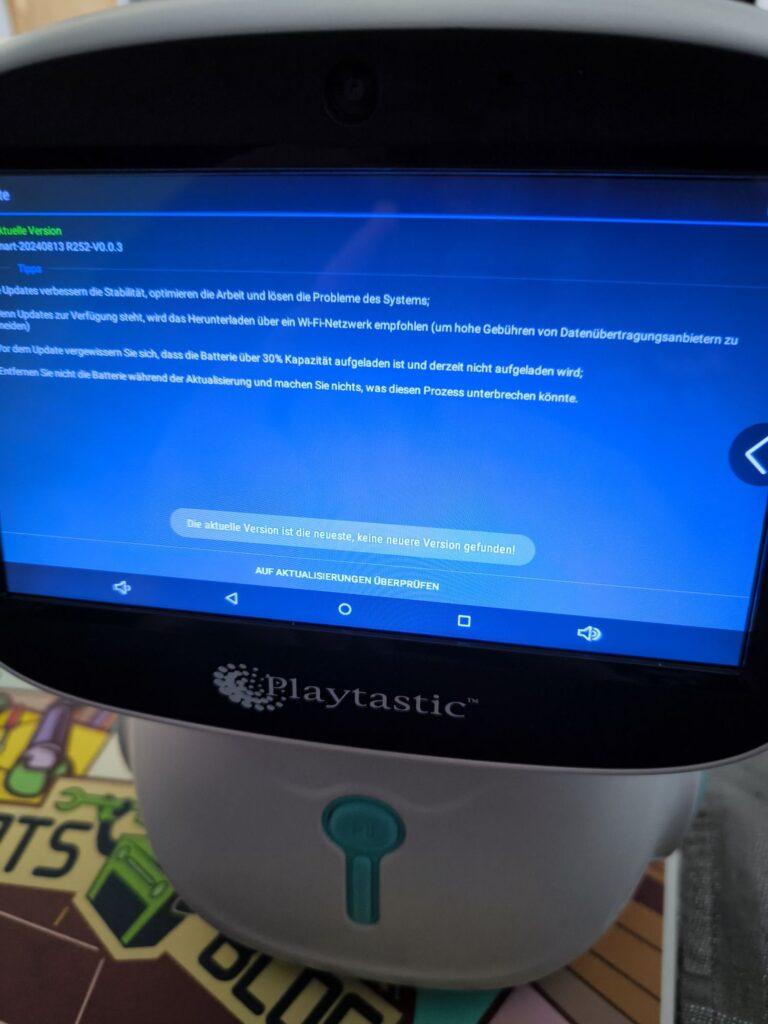
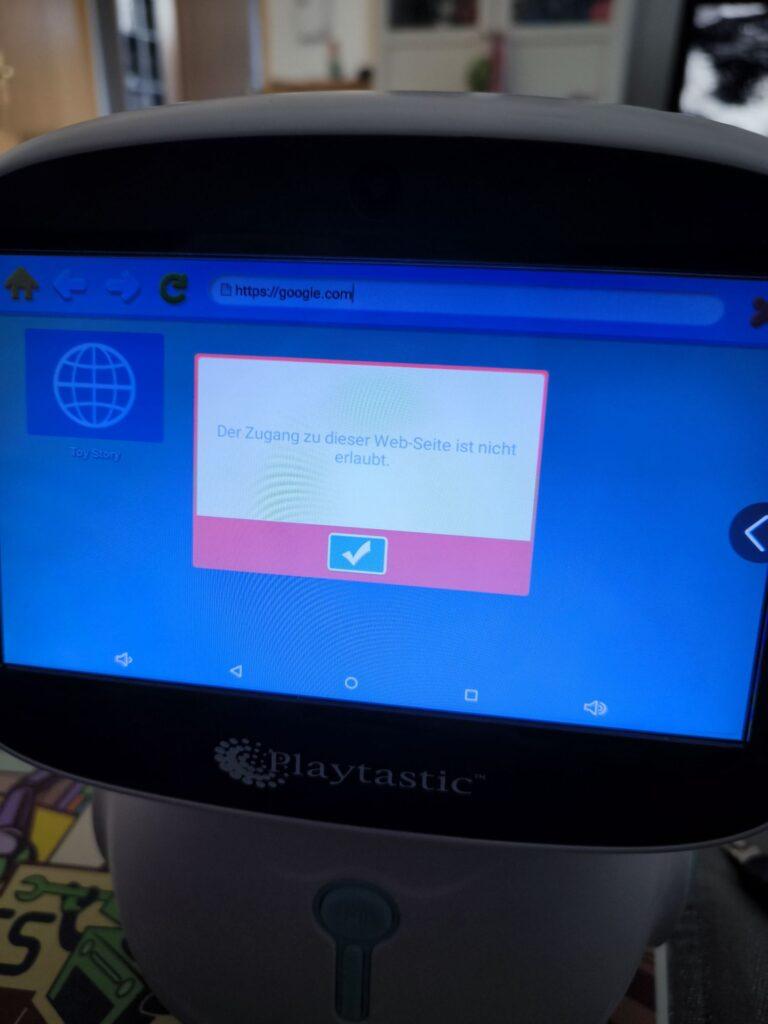
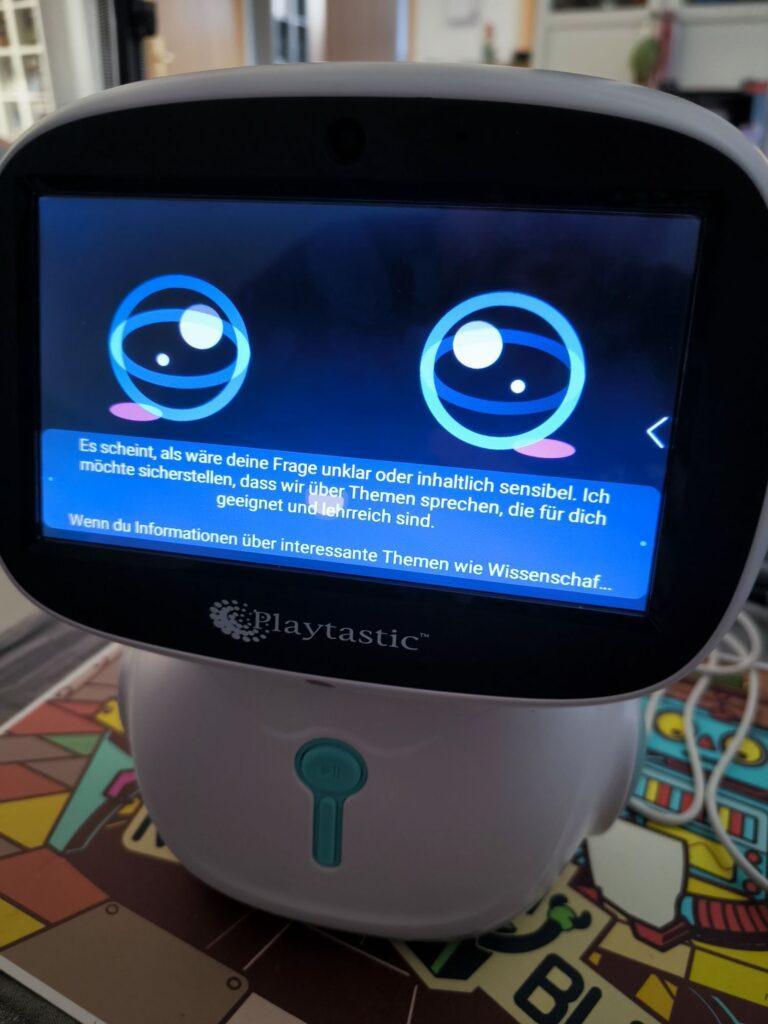
Kosmos Wind-Bots: Viel Wind um kleine Bots
Der Kosmos Wind-Bots Experimentierkasten ist ein faszinierendes Lernspielzeug, das Kinder und Jugendliche auf spannende Weise in die Welt der Mechanik, Physik und Robotik einführt. Dieser Baukasten ermöglicht es, aus einfachen Bauteilen energieeffiziente Roboter zu konstruieren, die allein durch die Kraft des Windes angetrieben werden. Hier erfahren Sie alles Wissenswerte über dieses Produkt.
Was sind Wind-Bots?
Wind-Bots sind kleine Roboter, die durch Windkraft angetrieben werden. Der Experimentierkasten von Kosmos enthält alle notwendigen Materialien und Anleitungen, um bis zu sechs verschiedene Modelle zu bauen. Dabei lernen Kinder spielerisch, wie Energie aus der Umwelt genutzt werden kann, um Bewegung zu erzeugen. Die Bots bewegen sich durch die Luftströmung eines mitgelieferten aufbaubaren „Ventilators“ oder kräftiges Anpusten, wenn man nicht gerade bei Sturm vor die Tür möchte. – eine nachhaltige und innovative Idee.
Inhalt des Experimentierkastens
Der Kosmos Wind-Bots Baukasten bietet eine Vielzahl von Komponenten, die speziell für junge Tüftler entwickelt wurden. Dazu gehören:
- Bauteile aus Kunststoff: Zahnräder, Achsen und Verbindungsstücke für die mechanischen Konstruktionen.
- Getriebe und Rotoren: Diese ermöglichen die Umwandlung von Windenergie in Bewegungsenergie.
- Anleitung: Eine detaillierte Schritt-für-Schritt-Anleitung mit farbigen Illustrationen, die den Aufbau der Modelle erleichtert.
- benötigt wird ein Schraubenzieher und ein Seitenschneider
Die Anleitung erklärt nicht nur den Bau der Modelle, sondern vermittelt auch physikalische Grundlagen wie den Zusammenhang zwischen Windkraft und Bewegung.
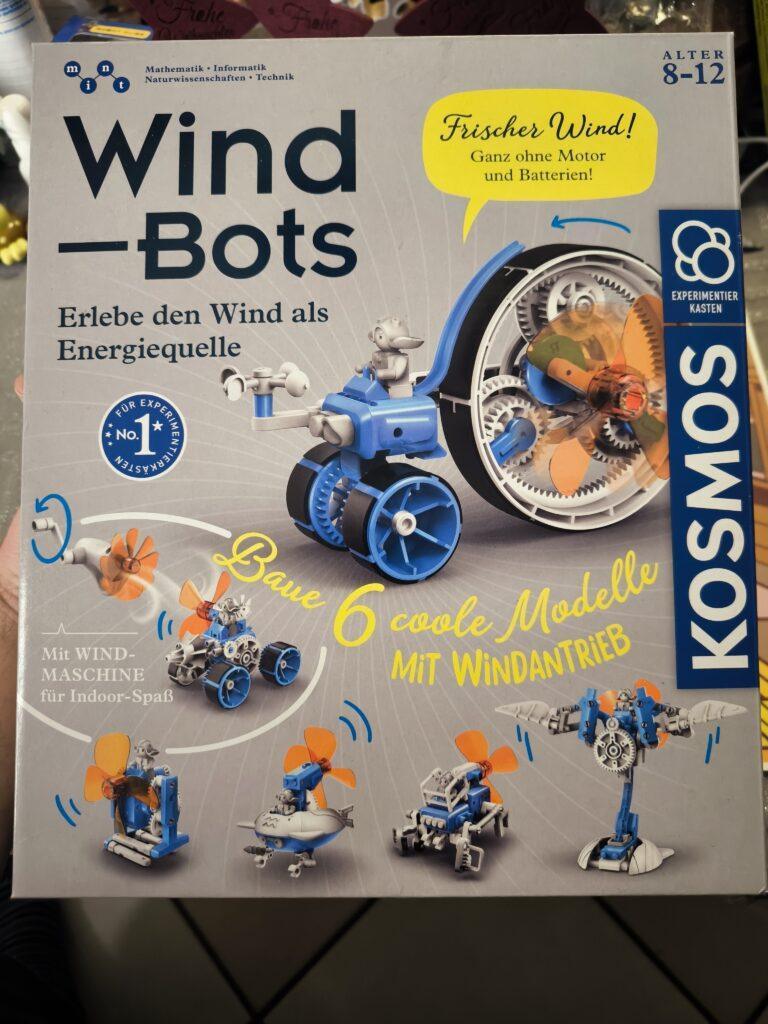
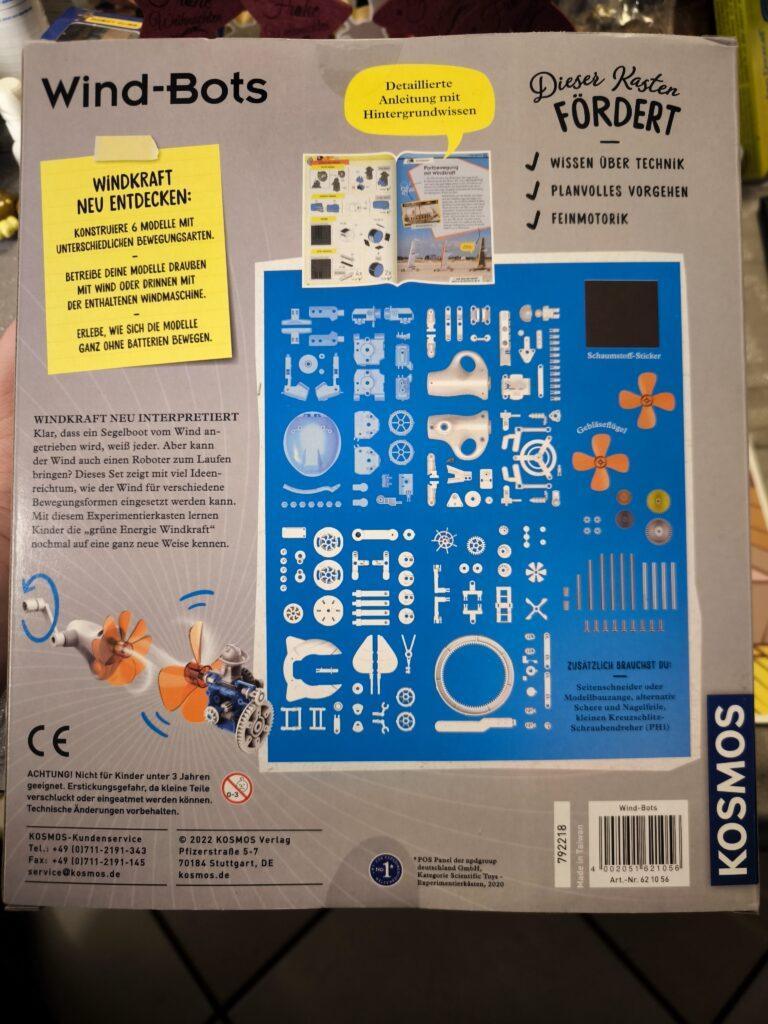
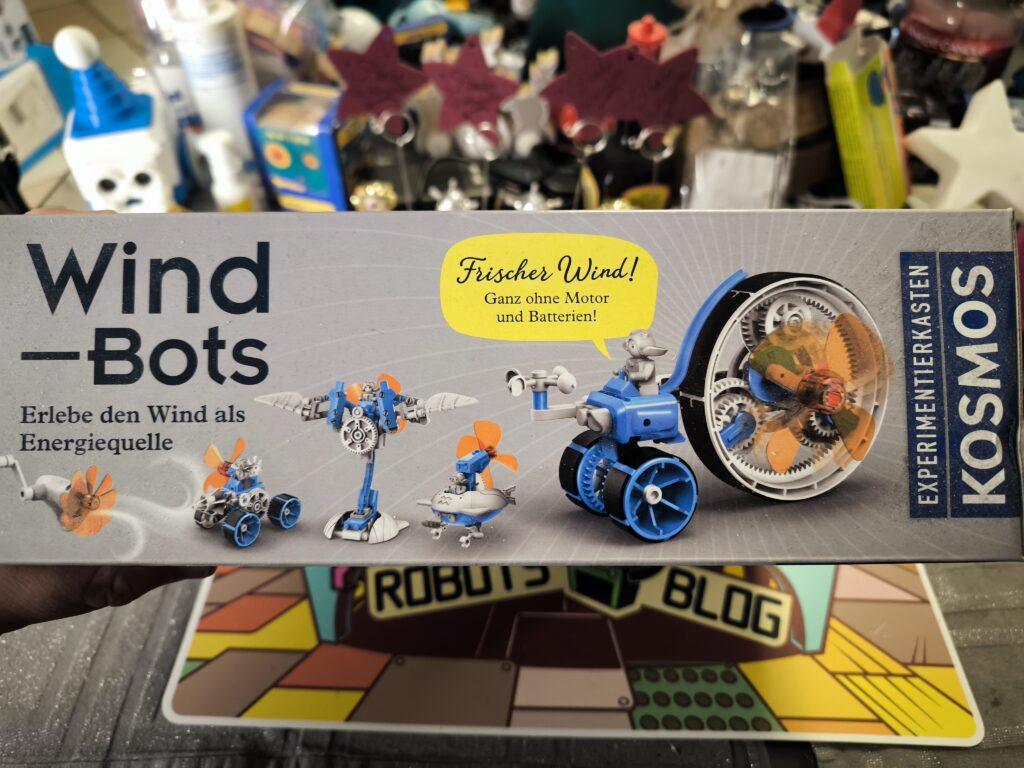
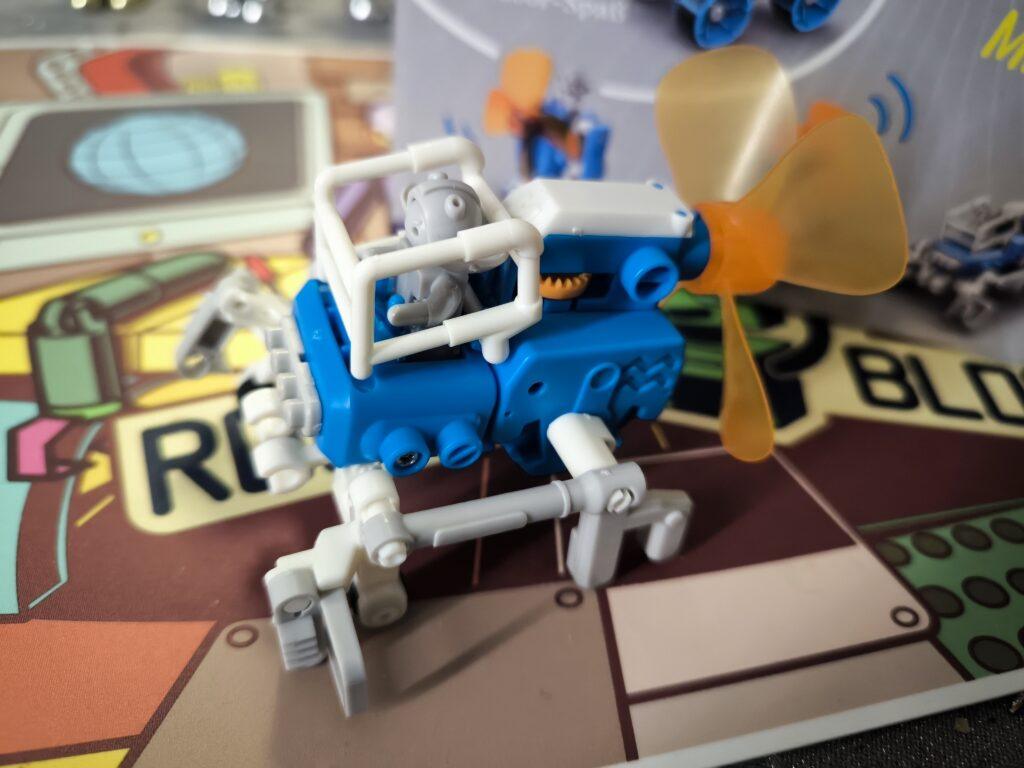
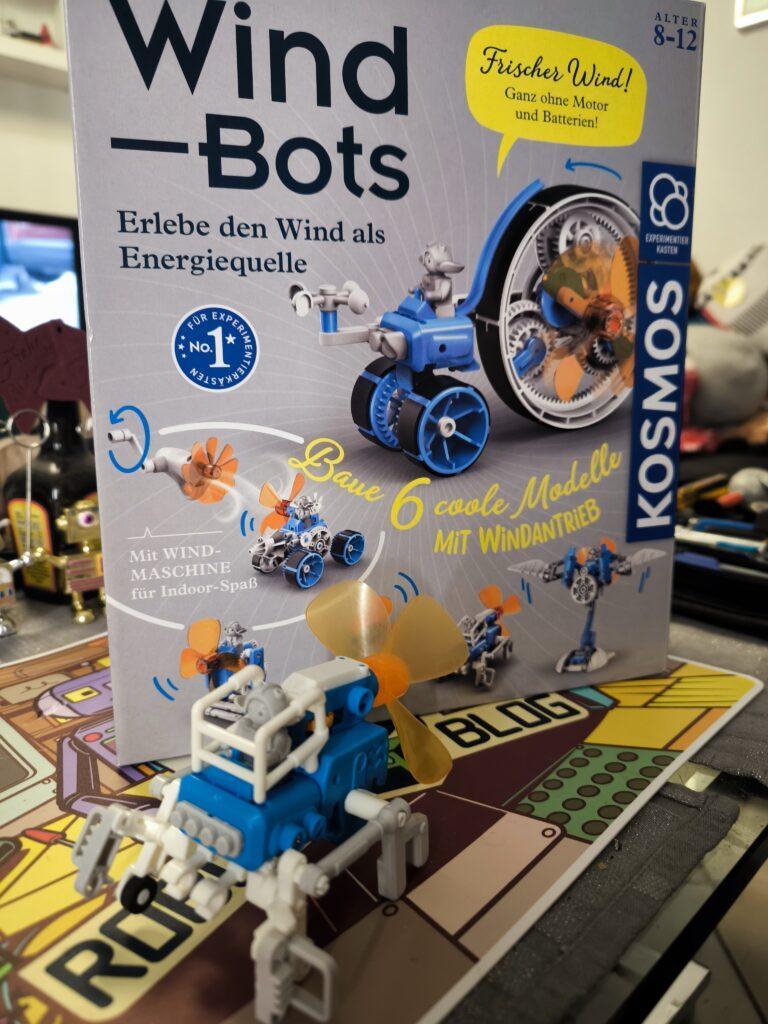
Mögliche Modelle
Mit dem Wind-Bots Baukasten können bis zu zehn verschiedene Roboter gebaut werden. Die Modelle umfassen unter anderem eine Flugmaschine, einen Lauf-Roboter, ein Tricycle, einen Surf-Bo(o)t, einen Quad-Läufer und einen Bohrer-Truck. Alle diese Roboter können aus den über 100 enthaltenen Bauteilen zusammengesetzt und immer wieder umgebaut werden
Jedes Modell zeigt unterschiedliche Prinzipien der Mechanik und Aerodynamik auf, was den Lernfaktor erhöht.
Lernziele und Vorteile
Der Kosmos Wind-Bots Experimentierkasten ist nicht nur ein Spielzeug, sondern auch ein wertvolles Lernwerkzeug. Zu den wichtigsten Vorteilen zählen:
- Förderung des technischen Verständnisses: Kinder lernen grundlegende physikalische Konzepte wie Energieumwandlung und Aerodynamik.
- Kreativität und Problemlösung: Beim Zusammenbau der Modelle werden logisches Denken und Kreativität gefördert.
- Nachhaltigkeitsbewusstsein: Die Nutzung von Windkraft sensibilisiert Kinder für erneuerbare Energien.
- Spaß am Experimentieren: Die interaktiven Modelle machen Wissenschaft greifbar und spannend.
Für wen ist der Baukasten geeignet?
Der Kosmos Wind-Bots Experimentierkasten richtet sich an Kinder ab 8 Jahren. Dank der klaren Anleitungen können auch Anfänger problemlos mit dem Set arbeiten. Es eignet sich hervorragend für technikbegeisterte Kinder und als gemeinsames Projekt für Eltern und Kinder.
RoboCup Rescue mit Open Roberta – Anleitung und benötigte JSON Dateien
Die RoboCup Junior-Community kann sich freuen: Ab sofort steht euch das Open Roberta Lab in einer speziell angepassten Umgebung zur Verfügung, um euch optimal auf den RoboCup Rescue vorzubereiten.Mit den neuen Tools und Features könnt ihr:
- Effizient trainieren
- Eure Algorithmen testen
- Kontinuierlich Verbesserungen vornehmen
Einfach hier starten: RCJ RescueOnlineSim im Open Roberta Lab auswählen.
Warum ist das wichtig?Der RoboCup Junior ist eine der spannendsten Herausforderungen für junge Robotik-Talente. Ziel ist es, autonome Roboter in realistischen Rettungsszenarien einzusetzen. Dabei stehen folgende Fähigkeiten im Fokus:
- Präzision und Zuverlässigkeit: Hindernisse überwinden und Opfer identifizieren.
- Effiziente Navigation: Linien folgen und komplexe Strecken meistern.
- Realistische Simulationen: Mit den neuesten Features von Open Roberta.
Mehr erfahren?Weitere Informationen findet ihr hier: junior.robocup.de
Jetzt starten und die Zukunft der Robotik erleben!Wenn du Teil der nächsten Generation innovativer Robotiker*innen sein möchtest, ist Open Roberta die ideale Plattform, um loszulegen. Schau dir das inspirierende Video an und lass dich begeistern!Ein besonderer Dank geht an Beate Jost und ihr Team, die diese neue Entwicklung im Open Roberta Lab ermöglicht haben, sowie an Gerald Steinbauer-Wagner für den wertvollen Austausch!
Hier findet ihr die benötigten JSON Dateien zum Download, sowie die dazugehörige Anleitung:
Anleitung_OpenRoberta_RCJ_Rescue.pdf
Hier auch nochmal die Anleitung:
Anleitung zur Einbindung der Simulationsumgebung im Open Roberta Lab
Mit der Simulationsumgebung im Open Roberta Lab kannst du Programme für den RoboCup Rescue testen und optimieren. Befolge diese Schritte, um die Umgebung einzurichten:
1. Gehe zu https://lab.open-roberta.org
Rufe die Webseite des Open Roberta Labs auf.

👉 Screenshot 1: (RCJ RescueOnlineSim-Kachel mit „Loslegen“-Button).
2. Wähle die RCJ RescueOnlineSim-Option aus
- Suche nach der RCJ RescueOnlineSim-Kachel.
- Klicke auf „Loslegen“.
3. Schreibe dein Programm
- Nutze die Programmierblöcke im Editor, um die Steuerung deines Roboters zu definieren.
- Du kannst Befehle wie „Fahren“, „Sensoren“ oder „Logik“ verwenden, um den Roboter für Rettungsszenarien zu programmieren.

👉 Screenshot 2: (Editor mit sichtbaren Blöcken und Programmieroptionen).
4. Klicke auf SIM
- Öffne die Simulationsansicht, indem du auf SIM (rechts im Menü) klickst.

👉 Screenshot 3: (SIM-Button rechts im Open Roberta Lab hervorgehoben).
5. Lade eine Umgebung hoch
- Wähle eine der beiden Rettungsumgebungen aus, die du vorbereitet hast:
- AustrianOpen24-Entry1.json
- AustrianOpen24-Entry2.json
- Lade die gewünschte Umgebung in die Simulation.

👉 Screenshot 4: (Anzeige des Upload-Prozesses der Umgebungen).
6. Starte mit dem Testen
- Klicke auf den Start-Button in der Simulation, um dein Programm zu testen.

👉 Screenshot 5: (Simulationsumgebung mit Roboter auf der Karte).
7. Test-Durchlauf starten
- Stopuhr verwenden: Mit einem Klick auf die Stopuhr startest du den Test-Durchlauf.
- Die Zeit wird gemessen, und die Punkteanzahl wird gezählt, basierend auf der Leistung des Roboters.

👉 Screenshot 6: (Stopuhr und Scoring-Funktion hervorgehoben).
Funktionen:
- Simulation in Echtzeit: Verfolge, wie dein Roboter Linien folgt, Hindernisse umgeht oder Aufgaben löst.
- Scoring-System: Die Simulation zeigt die Punkte und die Zeit an, um deine Leistung zu bewerten.
8. Weitere Informationen
- Integrierte Online-Hilfe: Nutze die integrierte Hilfefunktion, um mehr über die Programmierblöcke und Funktionen zu erfahren.

👉 Screenshot 7: (Integrierte Online-Hilfe hervorgehoben).
- Open Roberta Wiki: Vertiefte Informationen findest du im Open Roberta Wiki:
https://jira.iais.fraunhofer.de/wiki/spaces/ORInfo/pages/407961612/Set+Up+RCJ+RescueOnlineSim?showLanguage=de_DE.
Mit dieser Anleitung kannst du deine Programme optimal testen und dich auf Wettbewerbe wie den RoboCup Rescue vorbereiten. Viel Erfolg! 🚀
